Publications
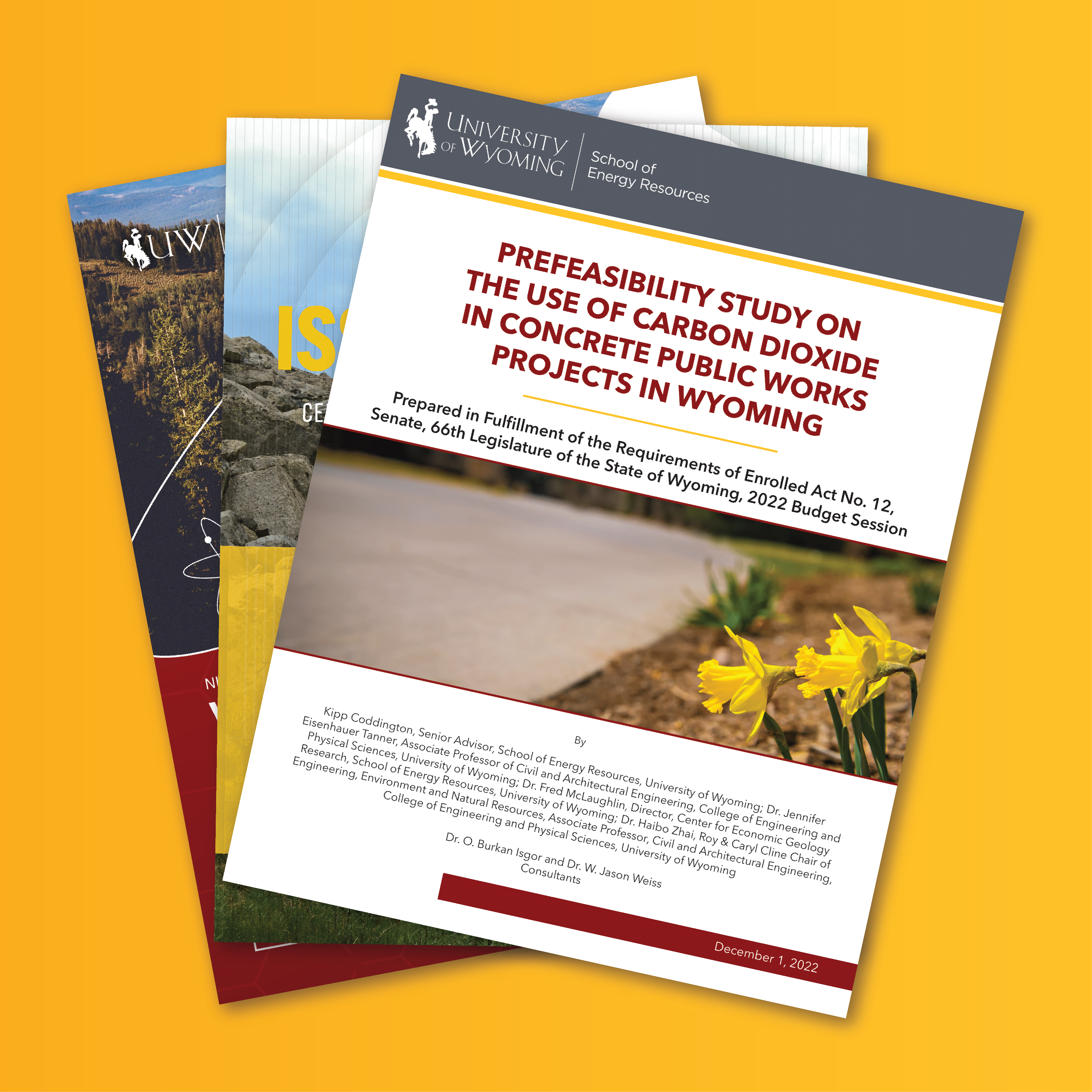
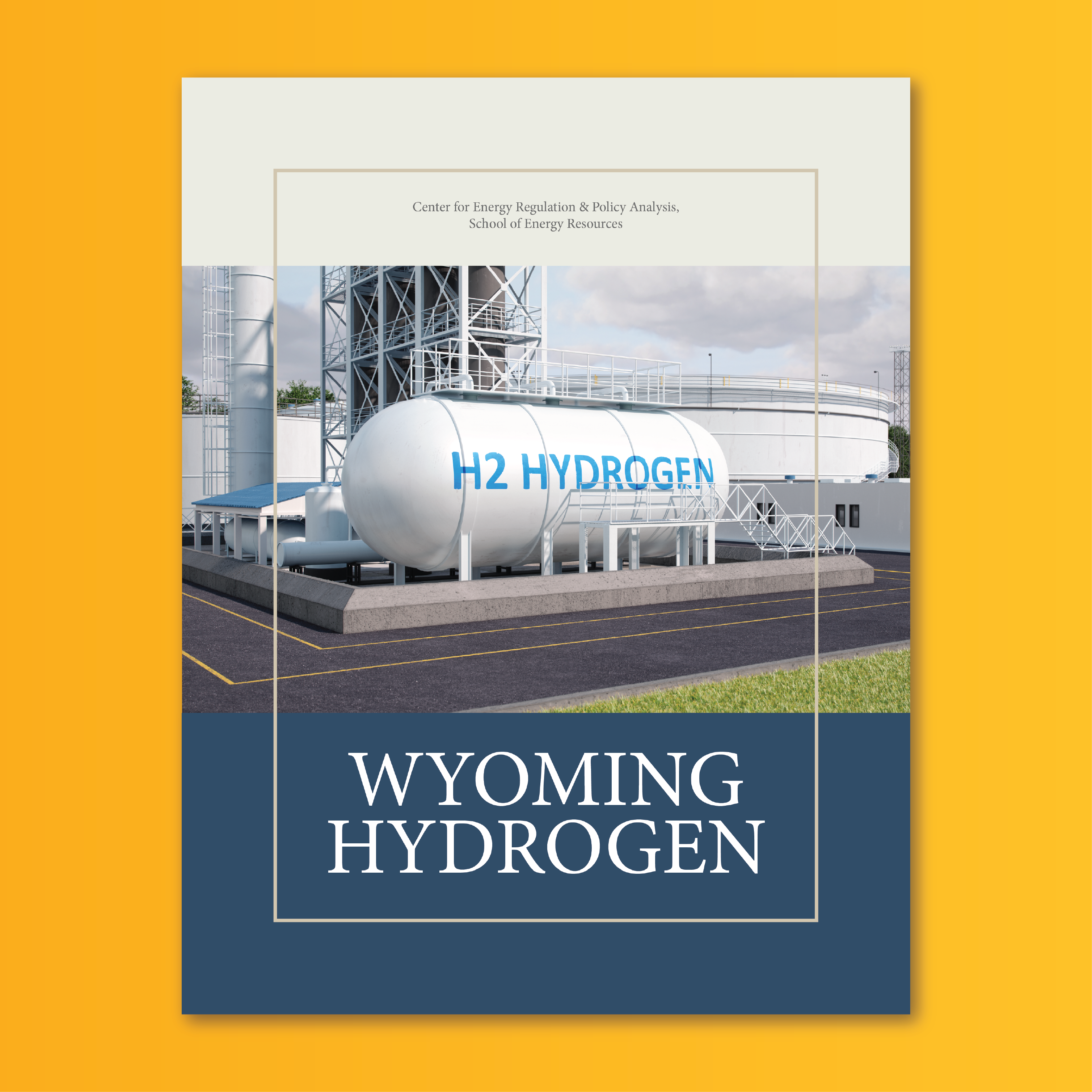 This paper provides a comprehensive report on the potential markets, economics, and
policies associated with commercial scale deployment of hydrogen in Wyoming. This
includes providing detailed descriptions and existing legal and regulatory frameworks
associated with hydrogen production, transportation, and storage. The paper also contains
an in-depth analysis of potential markets for Wyoming hydrogen and potential jobs
and economic benefits, as well as policy recommendations and incentives to support
the State’s efforts to become a competitive hydrogen provider.
This paper provides a comprehensive report on the potential markets, economics, and
policies associated with commercial scale deployment of hydrogen in Wyoming. This
includes providing detailed descriptions and existing legal and regulatory frameworks
associated with hydrogen production, transportation, and storage. The paper also contains
an in-depth analysis of potential markets for Wyoming hydrogen and potential jobs
and economic benefits, as well as policy recommendations and incentives to support
the State’s efforts to become a competitive hydrogen provider.
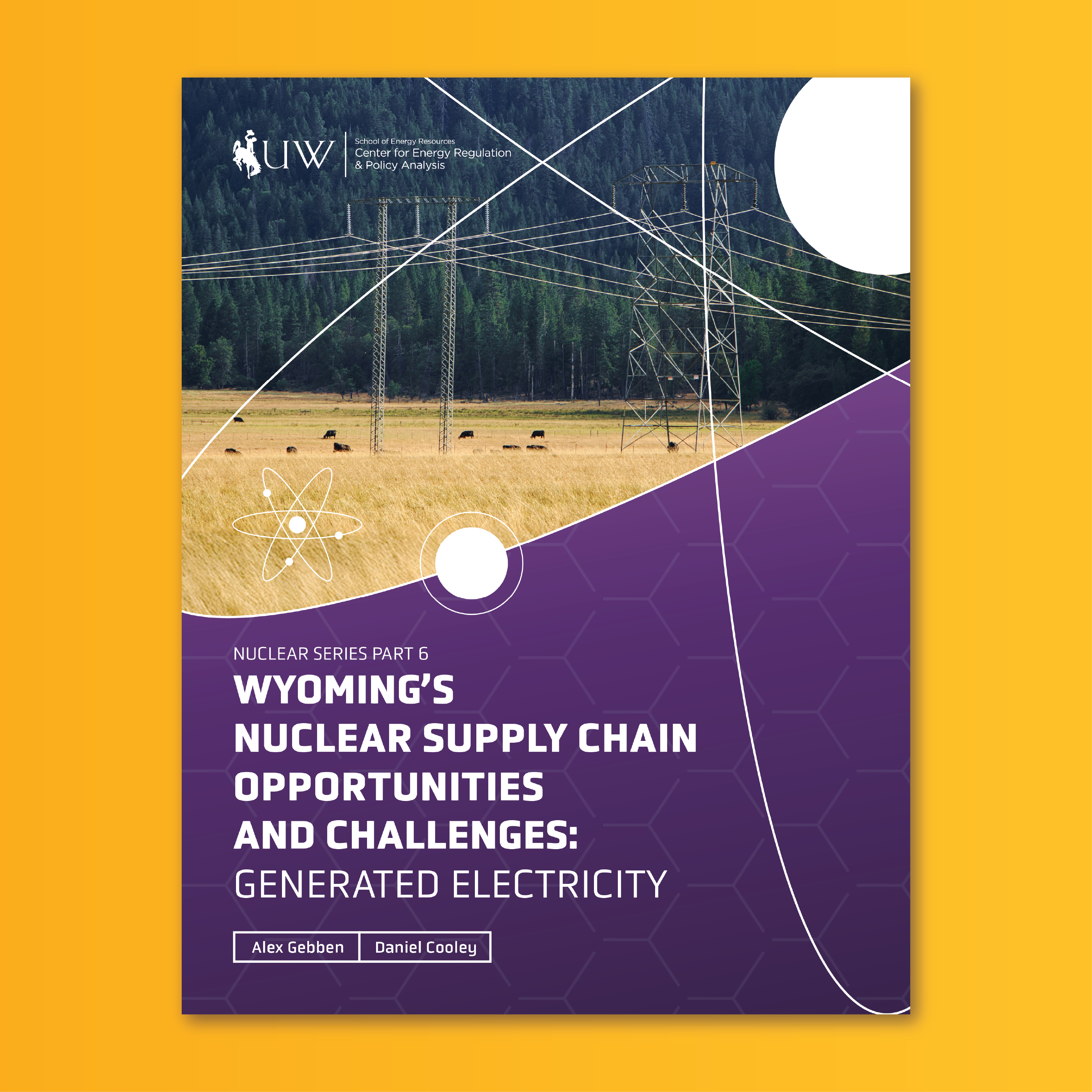 This report quantifies the economic outcomes of fostering a nuclear electricity generation
sector in Wyoming. The unique challenges and opportunities of attracting the industry
to Wyoming are identified. Additionally, an event study is performed that estimates
economic outcomes under a range of future nuclear power development paths.
This report quantifies the economic outcomes of fostering a nuclear electricity generation
sector in Wyoming. The unique challenges and opportunities of attracting the industry
to Wyoming are identified. Additionally, an event study is performed that estimates
economic outcomes under a range of future nuclear power development paths.
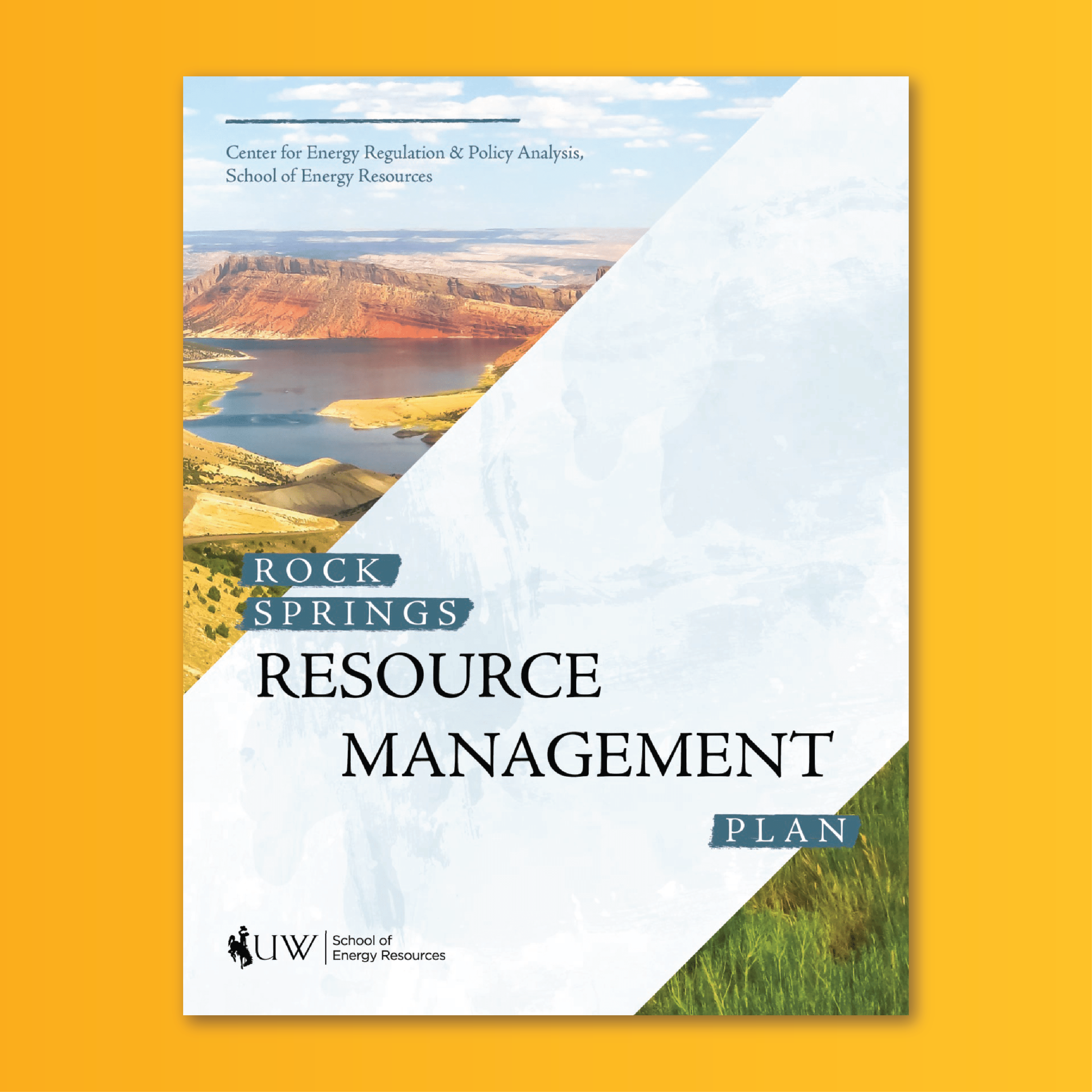 This paper analyzes potential impacts from the Bureau of Land Management’s (BLM) Rock
Springs Resource Management Plan (RMP) to Wyoming State revenues generated from energy
development. The paper provides the history of the Rock Springs RMP, describes the
overarching energy-related issues in the Draft Rock Springs RMP, and compares the
energy-related issues in the Draft RMP to those contained in the Approved RMP.
This paper analyzes potential impacts from the Bureau of Land Management’s (BLM) Rock
Springs Resource Management Plan (RMP) to Wyoming State revenues generated from energy
development. The paper provides the history of the Rock Springs RMP, describes the
overarching energy-related issues in the Draft Rock Springs RMP, and compares the
energy-related issues in the Draft RMP to those contained in the Approved RMP.
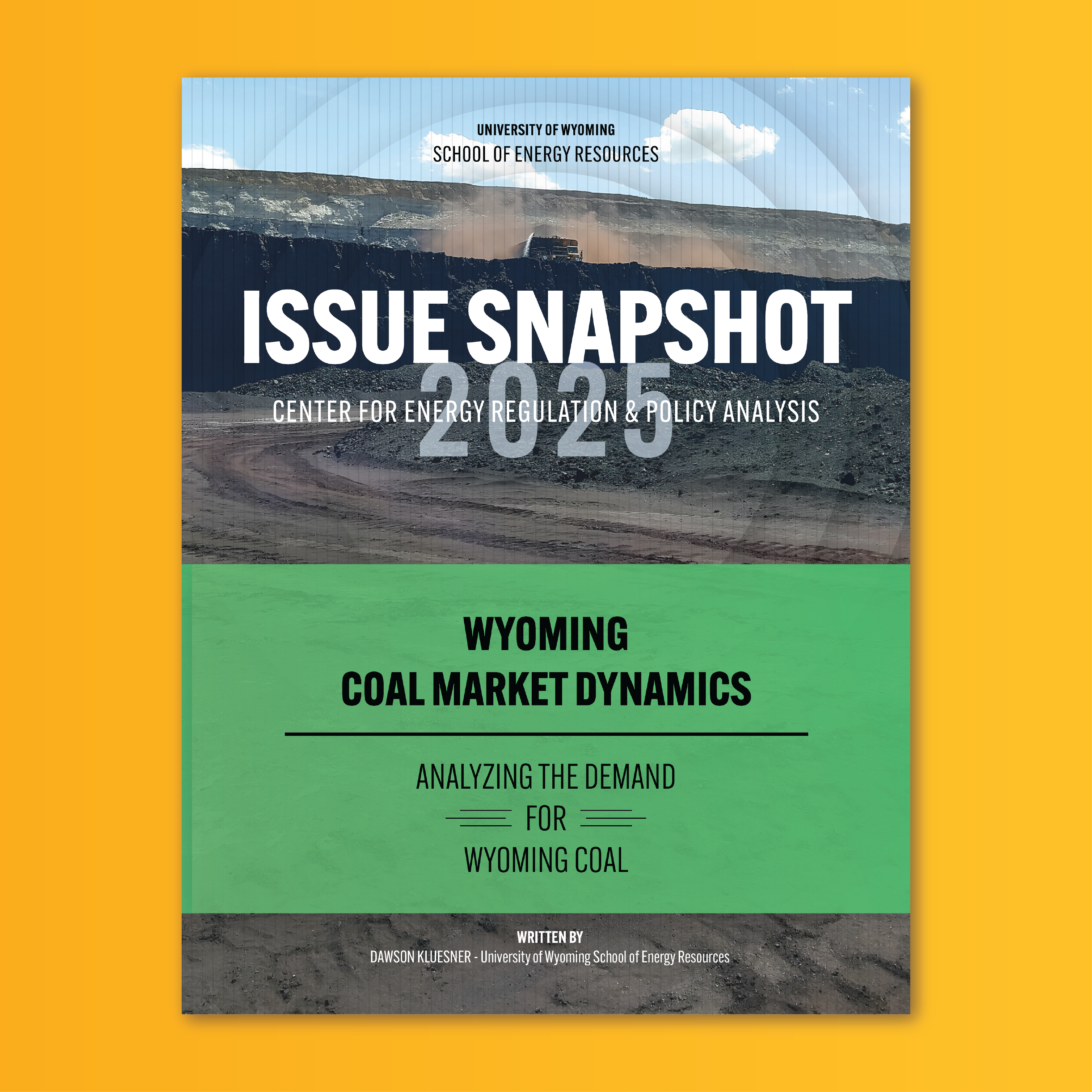 Part of the Issue Snapshot Series
Part of the Issue Snapshot Series
Because of Wyoming coal’s singular use as fuel for electricity generation and the heavy dependence on export markets to fill demand, this paper focuses on the decline in coal-derived electricity generation as a primary catalyst for the decline in Wyoming coal production.
This report was authored by Dawson Kluesner, Assistant Research Professional, CERPA
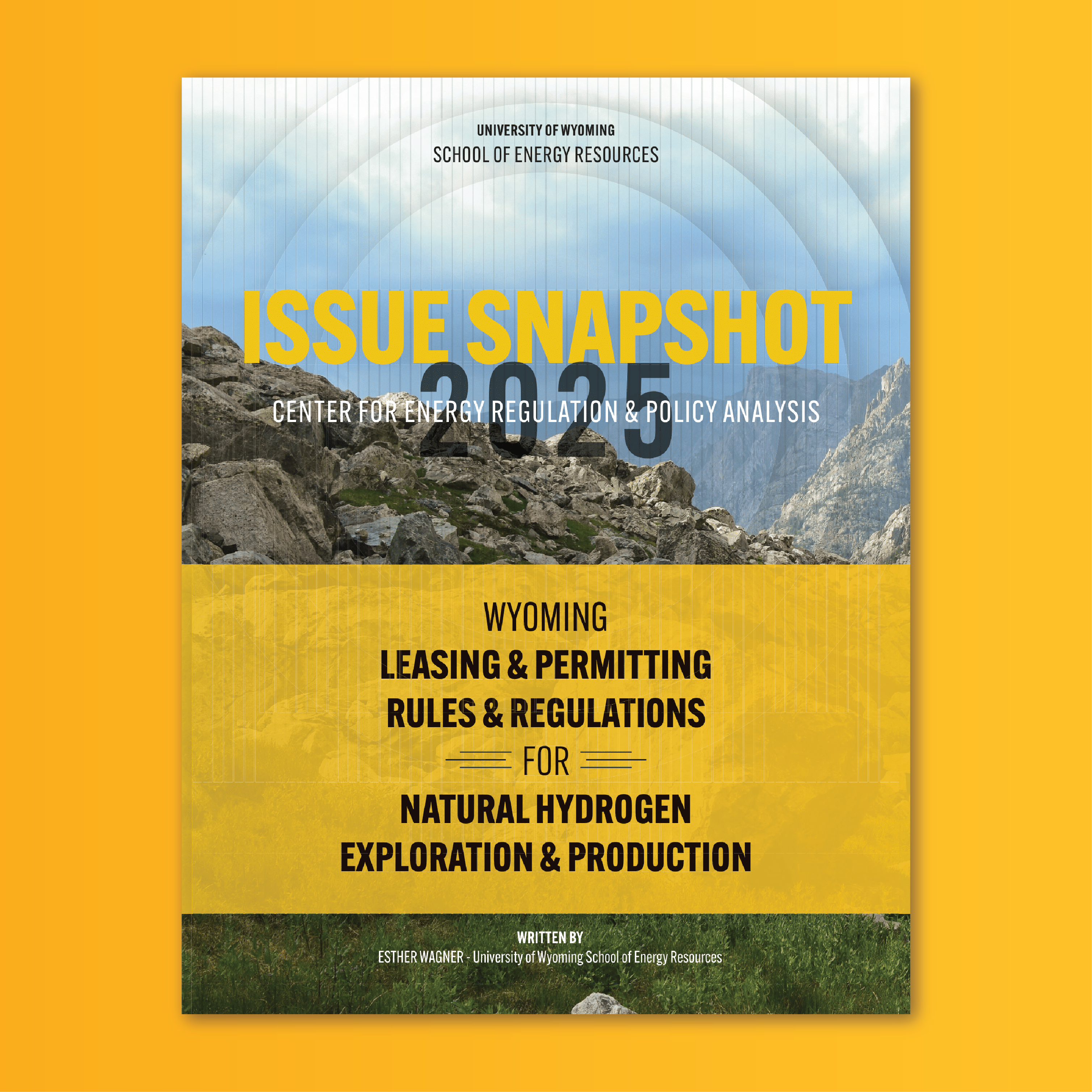 Part of the Issue Snapshot Series
Part of the Issue Snapshot Series
This Issue Snapshot focuses on the interest in the production of naturally occurring hydrogen. This interest has grown significantly in recent years and is largely due to the regulatory incentives provided in the Inflation Reduction Act (IRA) through 45V hydrogen production tax credits, and a 2023 United States Geological Survey (USGS) report.
This report was authored by Esther Wagner, Senior Research Professional, CERPA
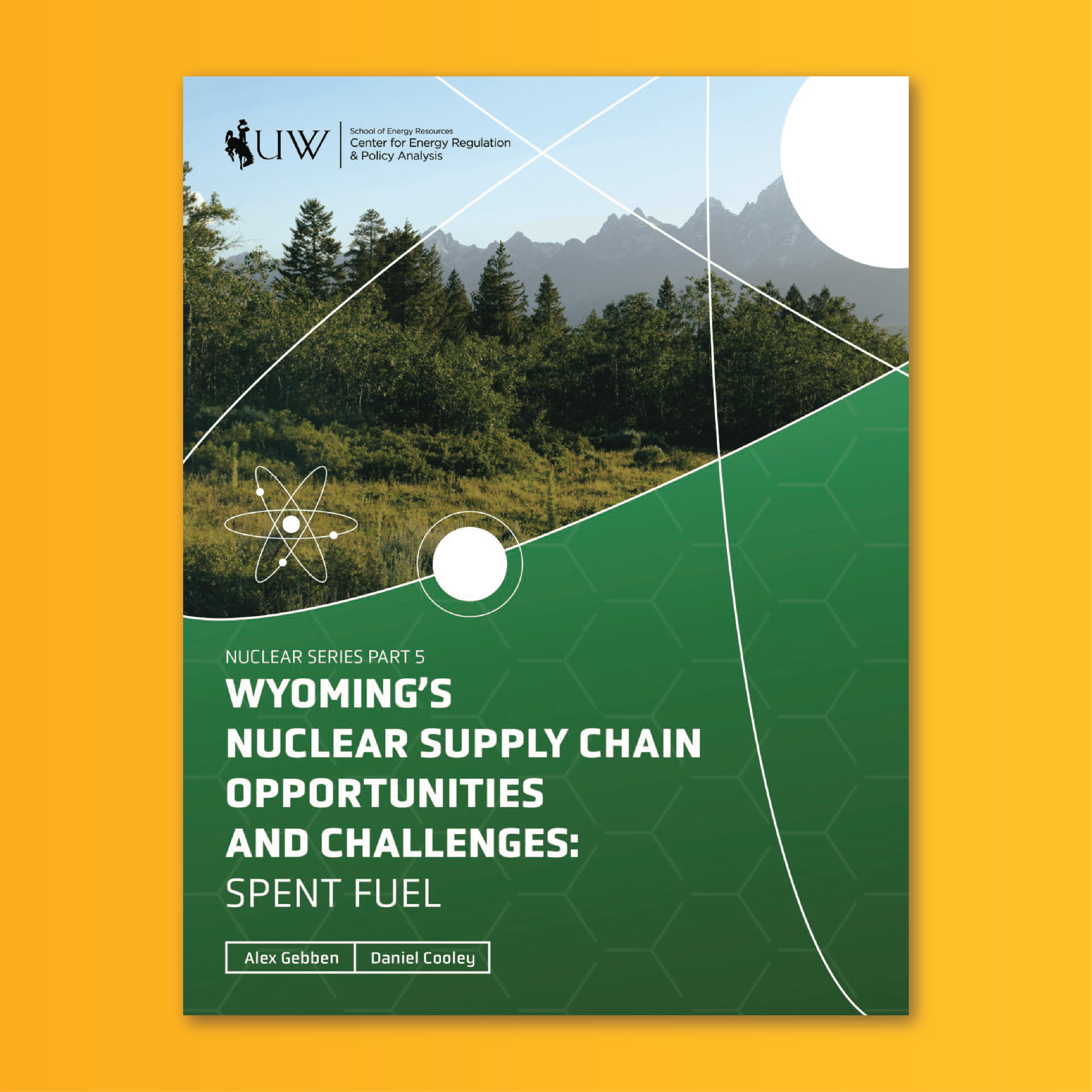 Nuclear Series, Part 5
Nuclear Series, Part 5
This report quantifies the economic opportunities and outcomes of forming a spent nuclear fuel (SNF) management industry in Wyoming. The unique opportunities and challenges of expanding the industry are identified. Additionally, empirical analysis is conducted to estimate the various benefits and costs associated with developing a consolidated interim storage facility (CISF) in the State.
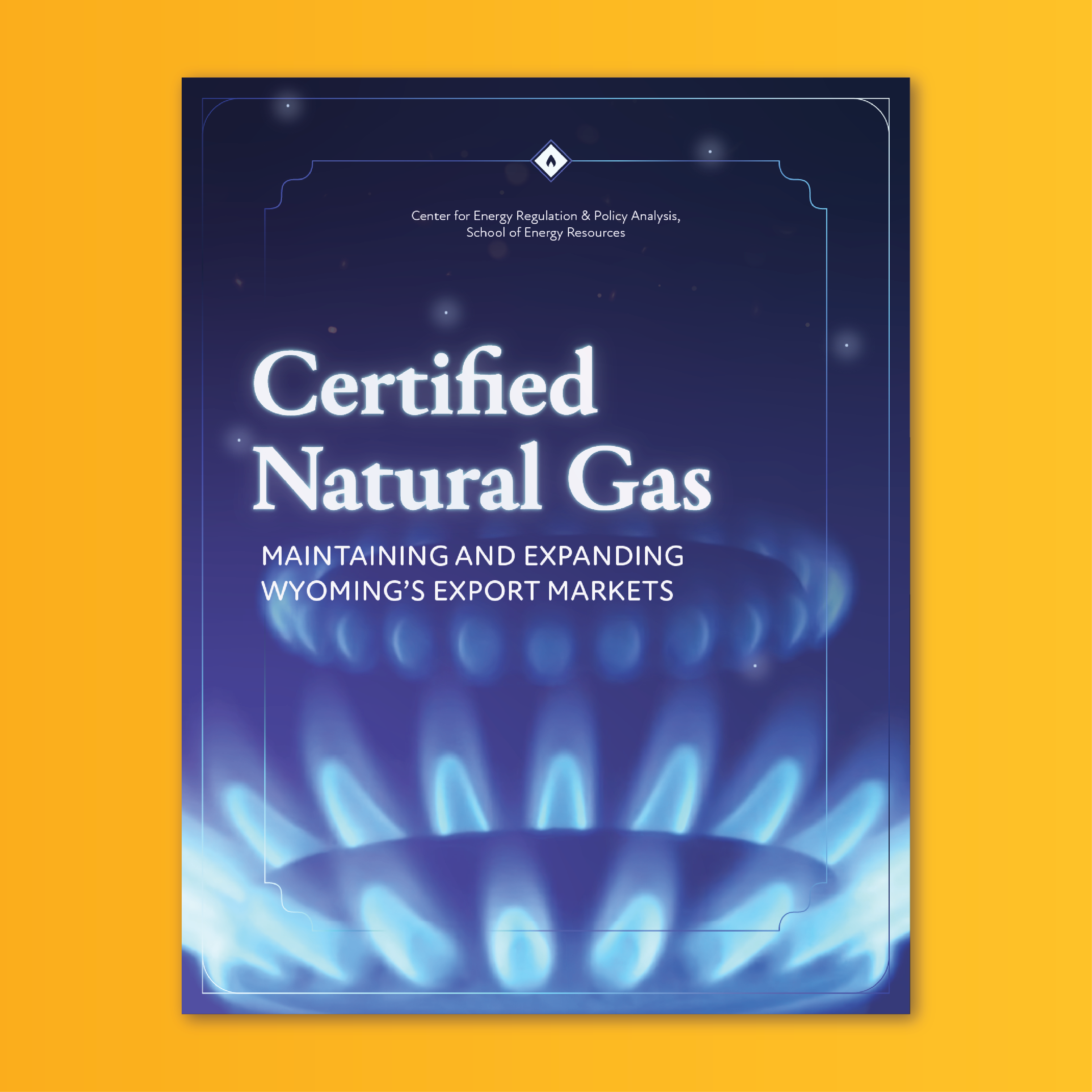
This paper explores the purposes and components of certified natural gas, describes major certification programs and voluntary frameworks, addresses recent trends and how they are playing out in the energy markets, including the slow growth of certified natural gas to date. The paper also provides recommendations for ways that certified natural gas can help Wyoming remain competitive in markets with greenhouse gas (GHG) reduction policies and goals. This paper explores the purposes and components of certified natural gas, describes major certification programs and voluntary frameworks, addresses recent trends and how they are playing out in the energy markets, including the slow growth of certified natural gas to date. The paper also provides recommendations for ways that certified natural gas can help Wyoming remain competitive in markets with greenhouse gas (GHG) reduction policies and goals.
 Nuclear Series, Part 4
Nuclear Series, Part 4
This report quantifies the economic outcomes of potential non-electricity uses of nuclear power in Wyoming. The unique opportunities and challenges of expanding the industry are identified. Additionally, an event study is performed that estimates economic outcomes under a range of technological adoption scenarios.
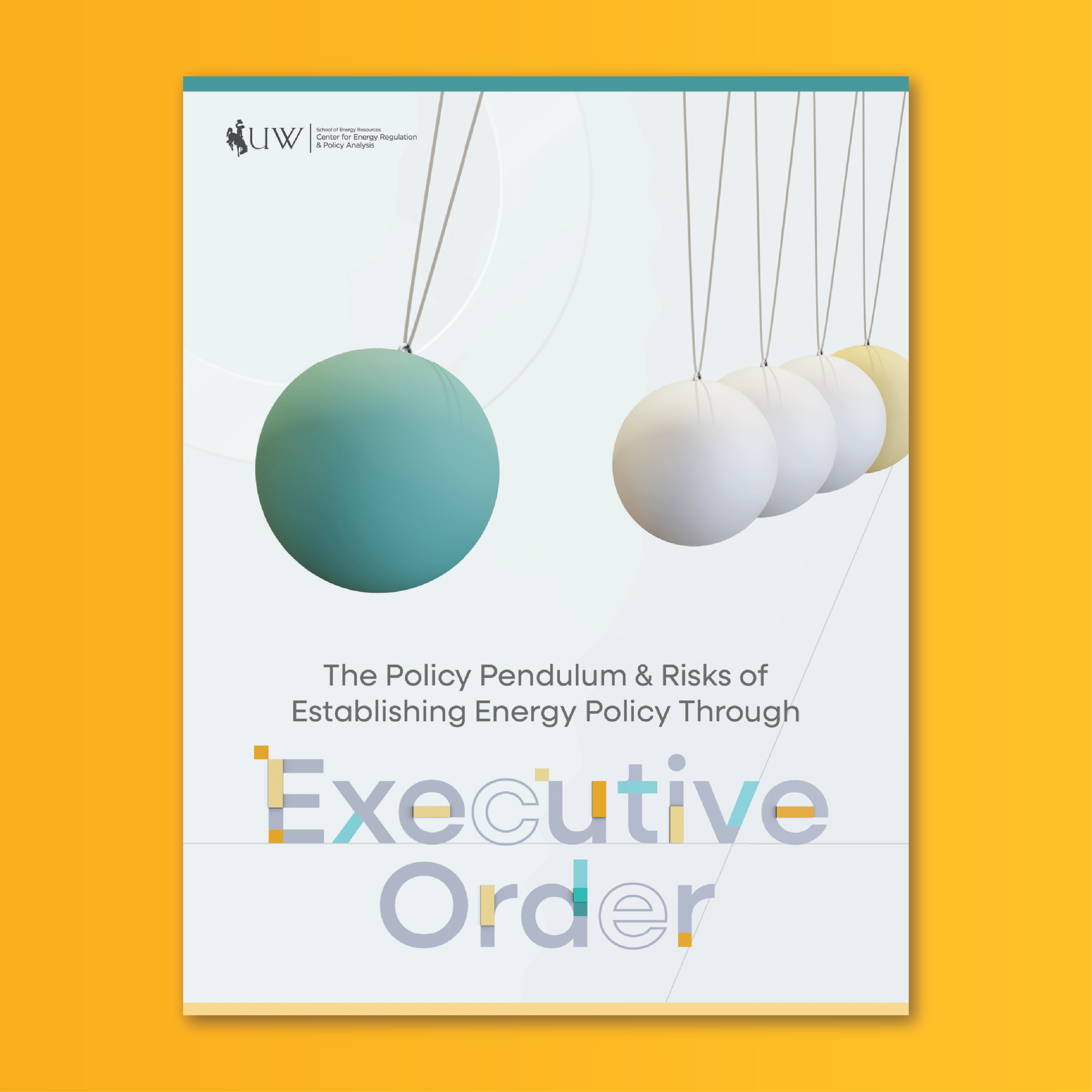 Though executive orders have long played a critical role in executive policymaking—and
their usage has actually declined since the mid-twentieth century—their influence
is not always well understood. In a political climate already prone to drastic swings
of the “policy pendulum,” a term which refers to the dramatic swings in public policy
that occur during partisan-driven shifts in the executive branch and other bodies
of governance, the power of executive orders can be striking.
Though executive orders have long played a critical role in executive policymaking—and
their usage has actually declined since the mid-twentieth century—their influence
is not always well understood. In a political climate already prone to drastic swings
of the “policy pendulum,” a term which refers to the dramatic swings in public policy
that occur during partisan-driven shifts in the executive branch and other bodies
of governance, the power of executive orders can be striking.
 The National Environmental Policy Act (NEPA) has been a cornerstone of environmental
decision-making in the United States since its enactment in 1970. Over the past few
years, the NEPA regulations and statute have undergone a series of substantial changes.
These rapid changes have left many struggling to keep up and understand the current
state of NEPA law and practice.
The National Environmental Policy Act (NEPA) has been a cornerstone of environmental
decision-making in the United States since its enactment in 1970. Over the past few
years, the NEPA regulations and statute have undergone a series of substantial changes.
These rapid changes have left many struggling to keep up and understand the current
state of NEPA law and practice.
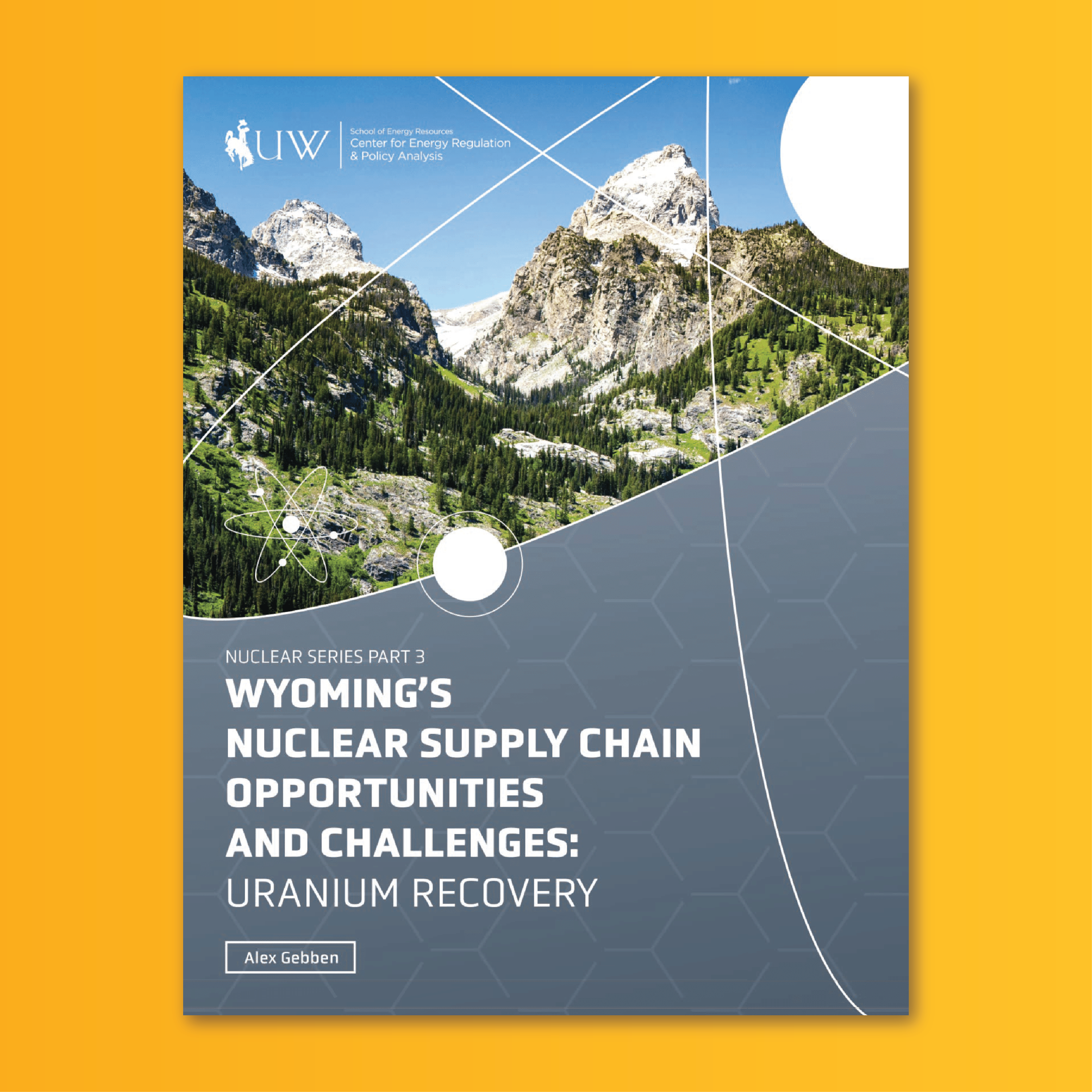 Nuclear Series, Part 3
Nuclear Series, Part 3
This report quantifies the economic outcomes of the uranium recovery industry in Wyoming. The unique opportunities and challenges of expanding the industry are identified. Additionally, an event study is performed that estimates economic outcomes under a range of potential future uranium price points.
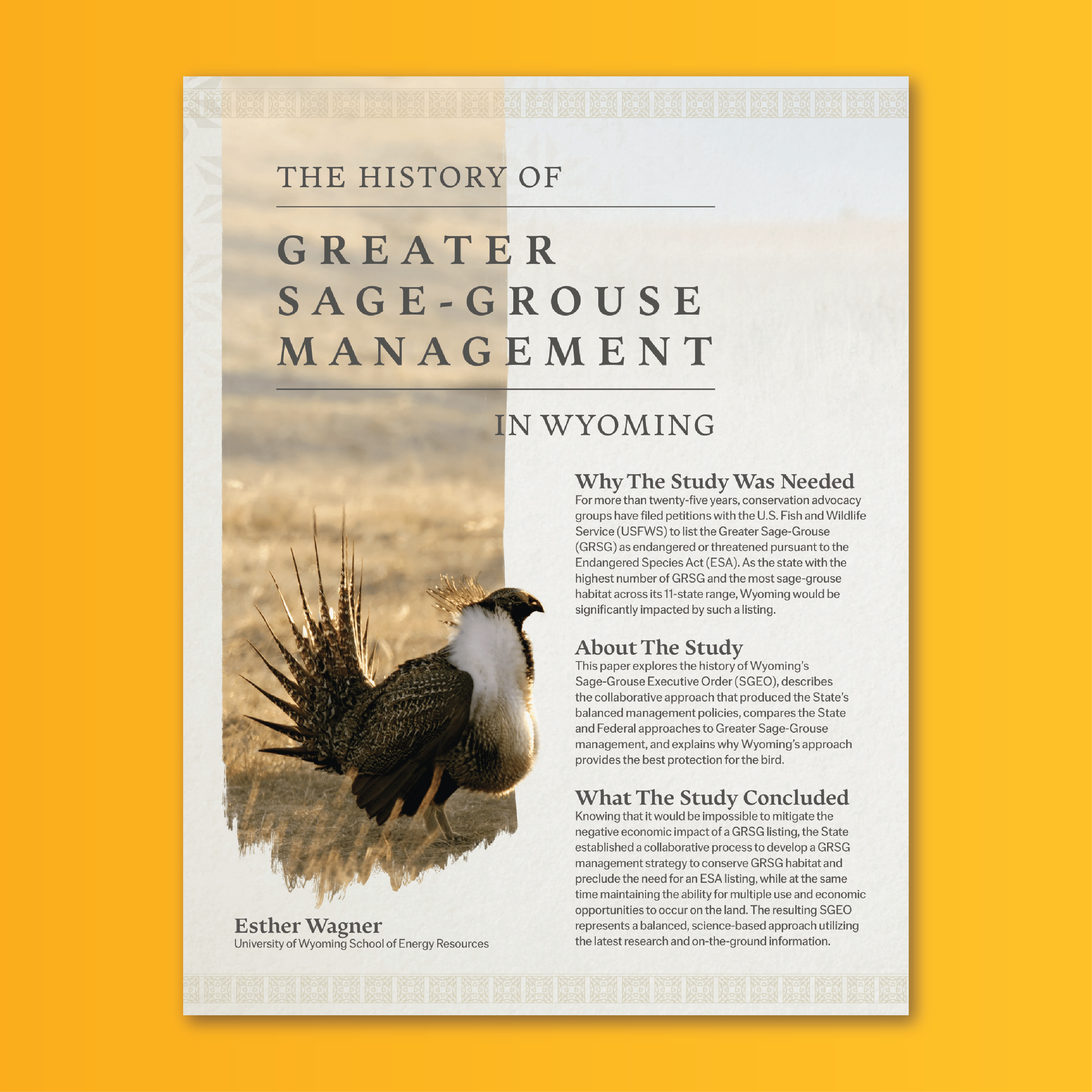 For more than twenty-five years, conservation advocacy groups have filed petitions
with the U.S. Fish and Wildlife Service (USFWS) to list the Greater Sage-Grouse (GRSG)
as endangered or threatened pursuant to the Endangered Species Act (ESA). As the state
with the highest number of GRSG and the most sage-grouse habitat across its 11-state
range, Wyoming would be significantly impacted by such a listing. The State’s early
recognition of this led to an unprecedented collaborative effort to protect the bird
and its habitat.
For more than twenty-five years, conservation advocacy groups have filed petitions
with the U.S. Fish and Wildlife Service (USFWS) to list the Greater Sage-Grouse (GRSG)
as endangered or threatened pursuant to the Endangered Species Act (ESA). As the state
with the highest number of GRSG and the most sage-grouse habitat across its 11-state
range, Wyoming would be significantly impacted by such a listing. The State’s early
recognition of this led to an unprecedented collaborative effort to protect the bird
and its habitat.
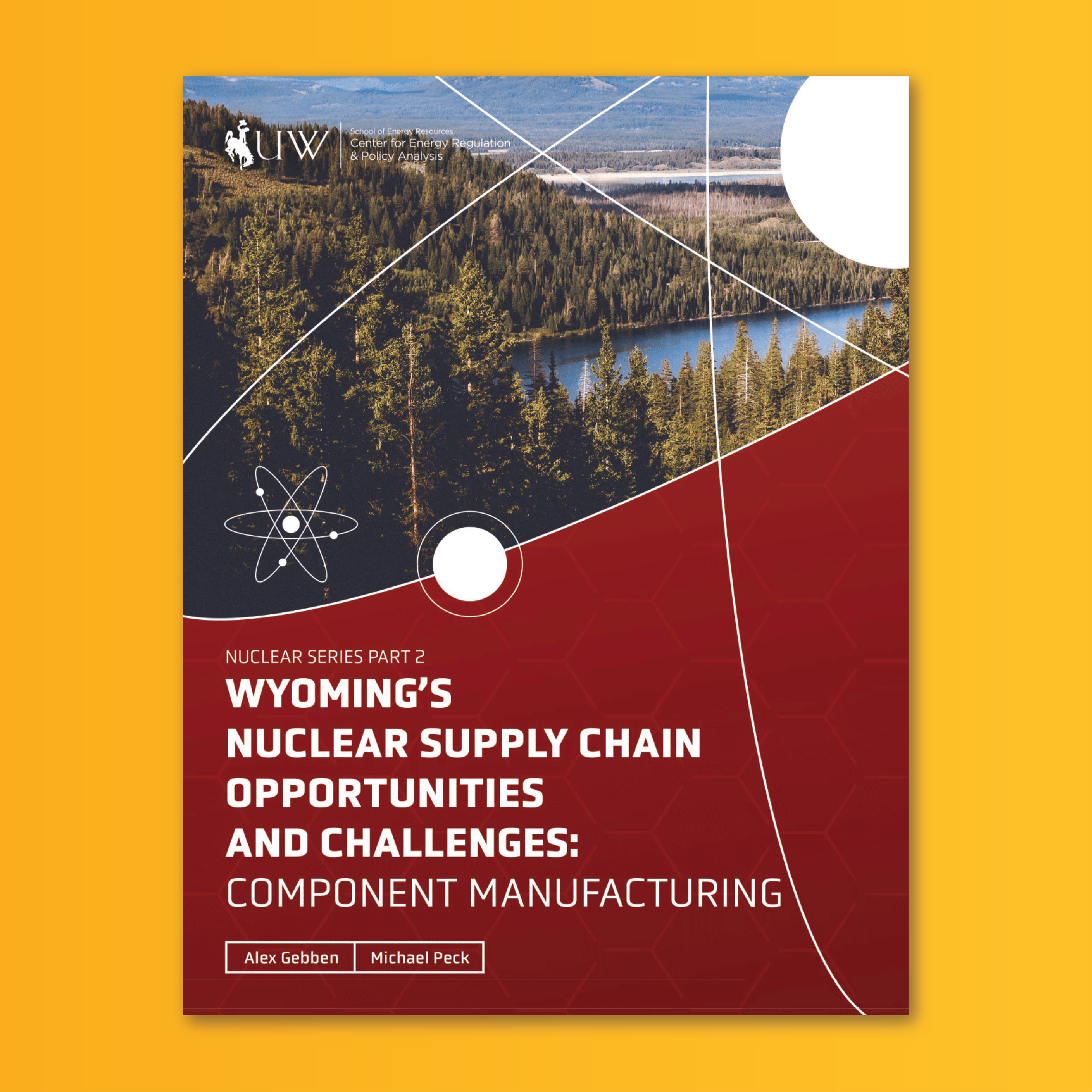 Nuclear Series, Part 2
Nuclear Series, Part 2
This report quantifies the economic outcomes of fostering a nuclear component manufacturing industry in Wyoming. The unique challenges and opportunities of attracting the industry to Wyoming are identified. Additionally, an event study is performed that estimates economic outcomes under a range of future nuclear power development paths.
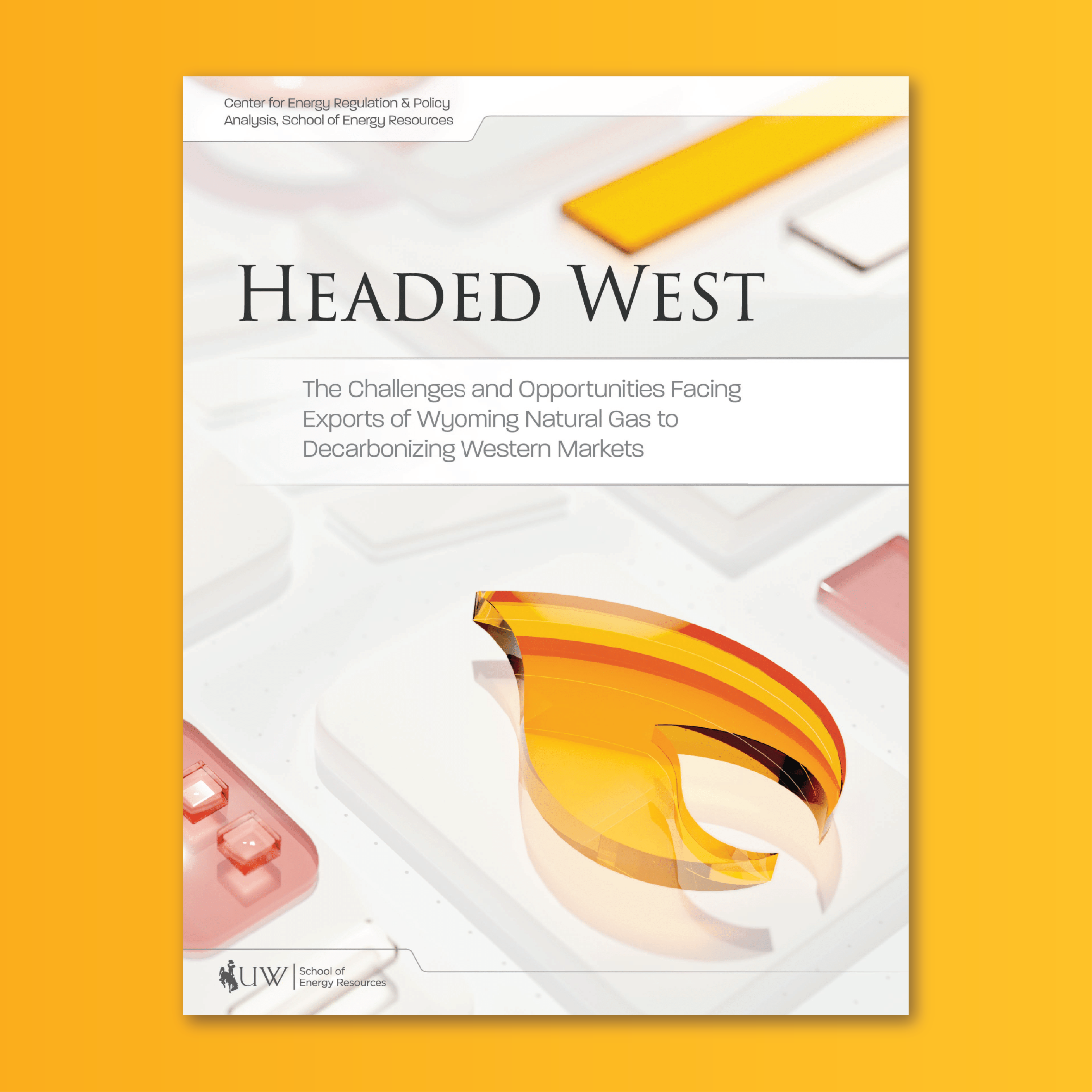 This paper provides an overview of natural gas production in Wyoming, explains the
challenges facing exports of the State’s natural gas posed by other states’ energy
policies, and describes how Wyoming is uniquely positioned to thrive given the low-carbon
attributes of its natural gas resource.
This paper provides an overview of natural gas production in Wyoming, explains the
challenges facing exports of the State’s natural gas posed by other states’ energy
policies, and describes how Wyoming is uniquely positioned to thrive given the low-carbon
attributes of its natural gas resource.
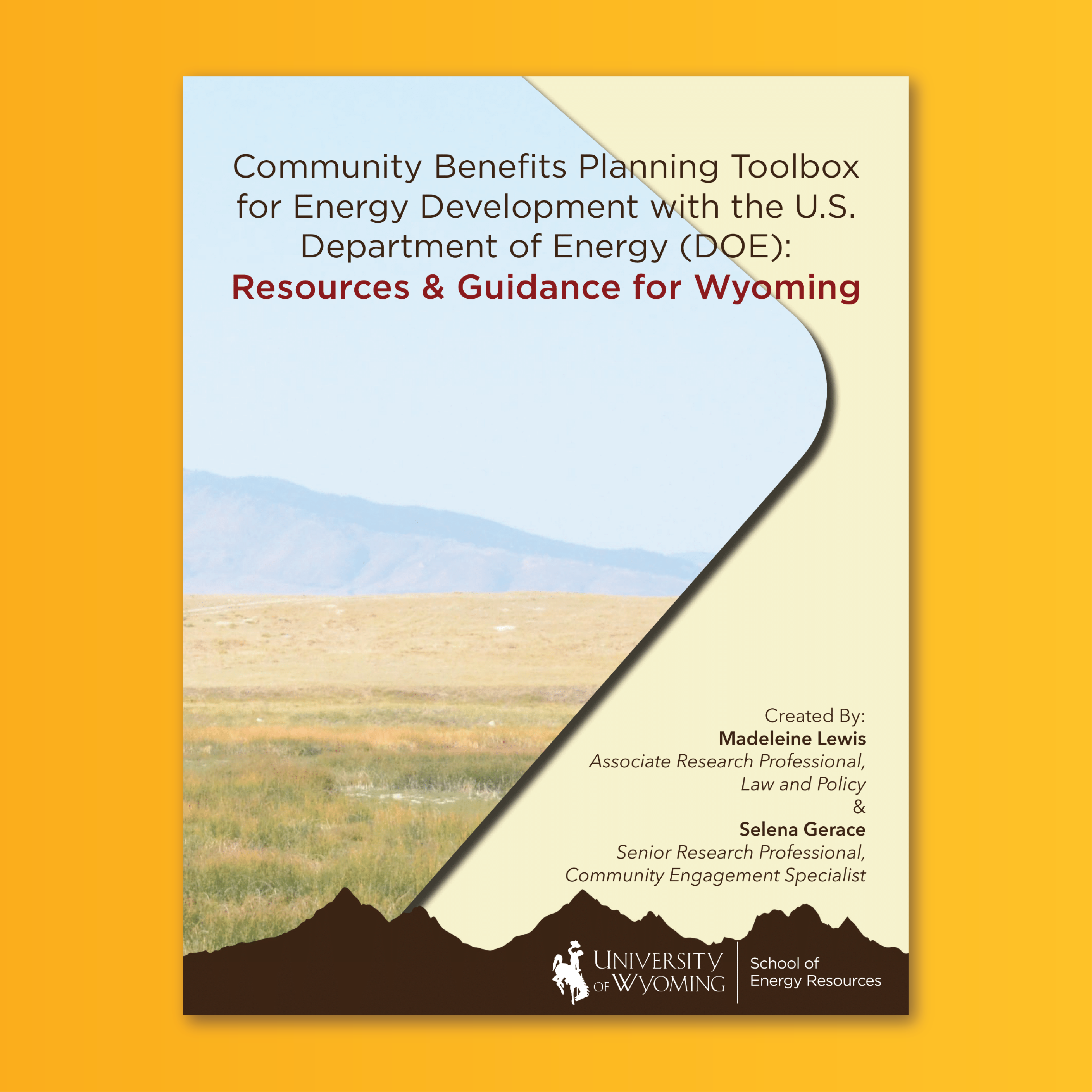 This toolbox provides a summary of key resources and strategies for Wyoming stakeholders
to use as guidance for developing community benefit plans (CBPs) in relation to applications
for federal funding from the Department of Energy. CBPs are an increasingly common
requirement in federal grant proposals and impose requirements related to community
engagement, workforce development, diversity and inclusion, and “environmental justice”
around emerging energy projects.
This toolbox provides a summary of key resources and strategies for Wyoming stakeholders
to use as guidance for developing community benefit plans (CBPs) in relation to applications
for federal funding from the Department of Energy. CBPs are an increasingly common
requirement in federal grant proposals and impose requirements related to community
engagement, workforce development, diversity and inclusion, and “environmental justice”
around emerging energy projects.
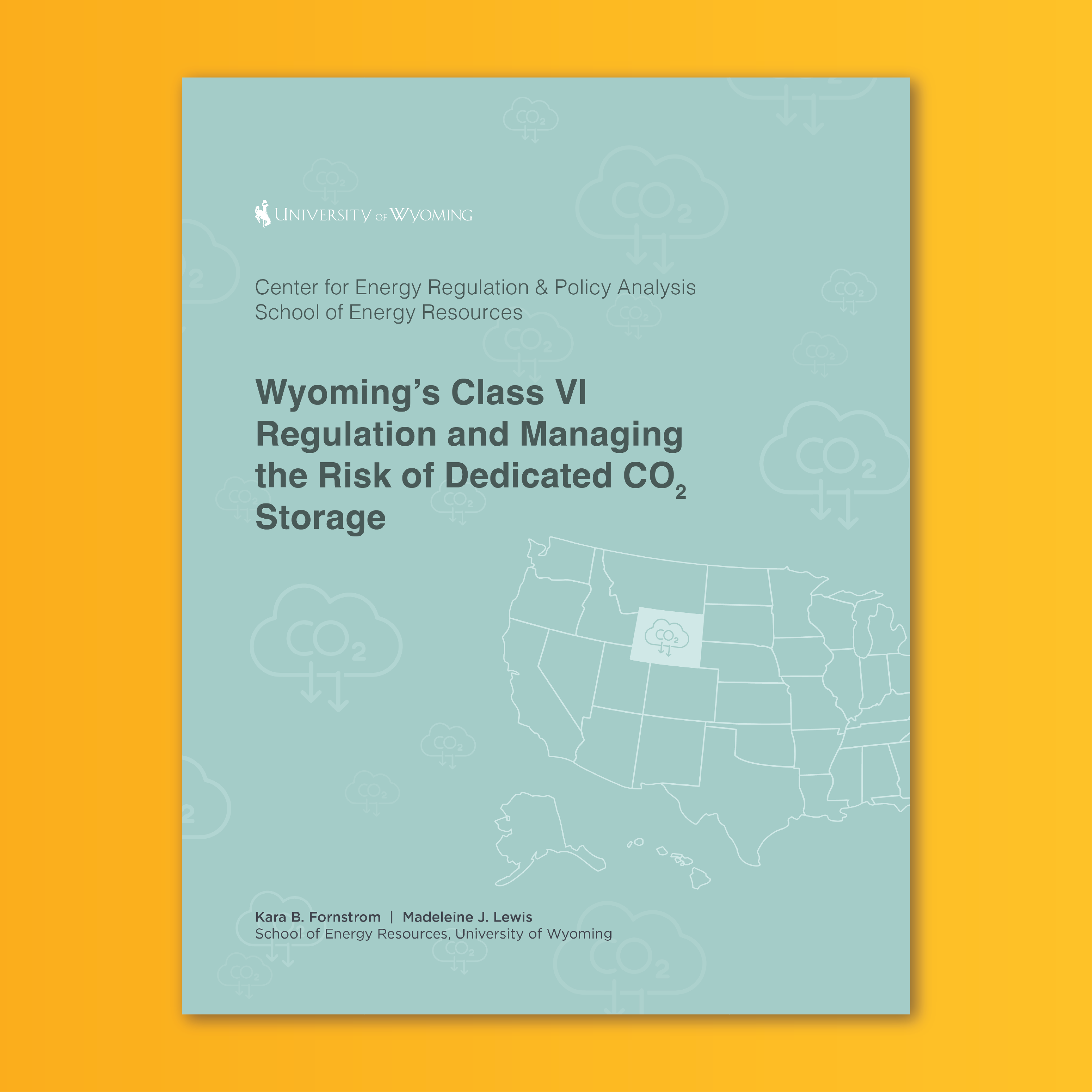 This white paper summarizes how the Wyoming Department of Environmental Quality (“WDEQ”)
regulates Class VI of the Safe Drinking Water Act’s (SDWA) Underground Injection Control
(UIC) Program, including analysis of the most recent legislation addressing long-term
stewardship of injected carbon dioxide (CO2).
This white paper summarizes how the Wyoming Department of Environmental Quality (“WDEQ”)
regulates Class VI of the Safe Drinking Water Act’s (SDWA) Underground Injection Control
(UIC) Program, including analysis of the most recent legislation addressing long-term
stewardship of injected carbon dioxide (CO2).
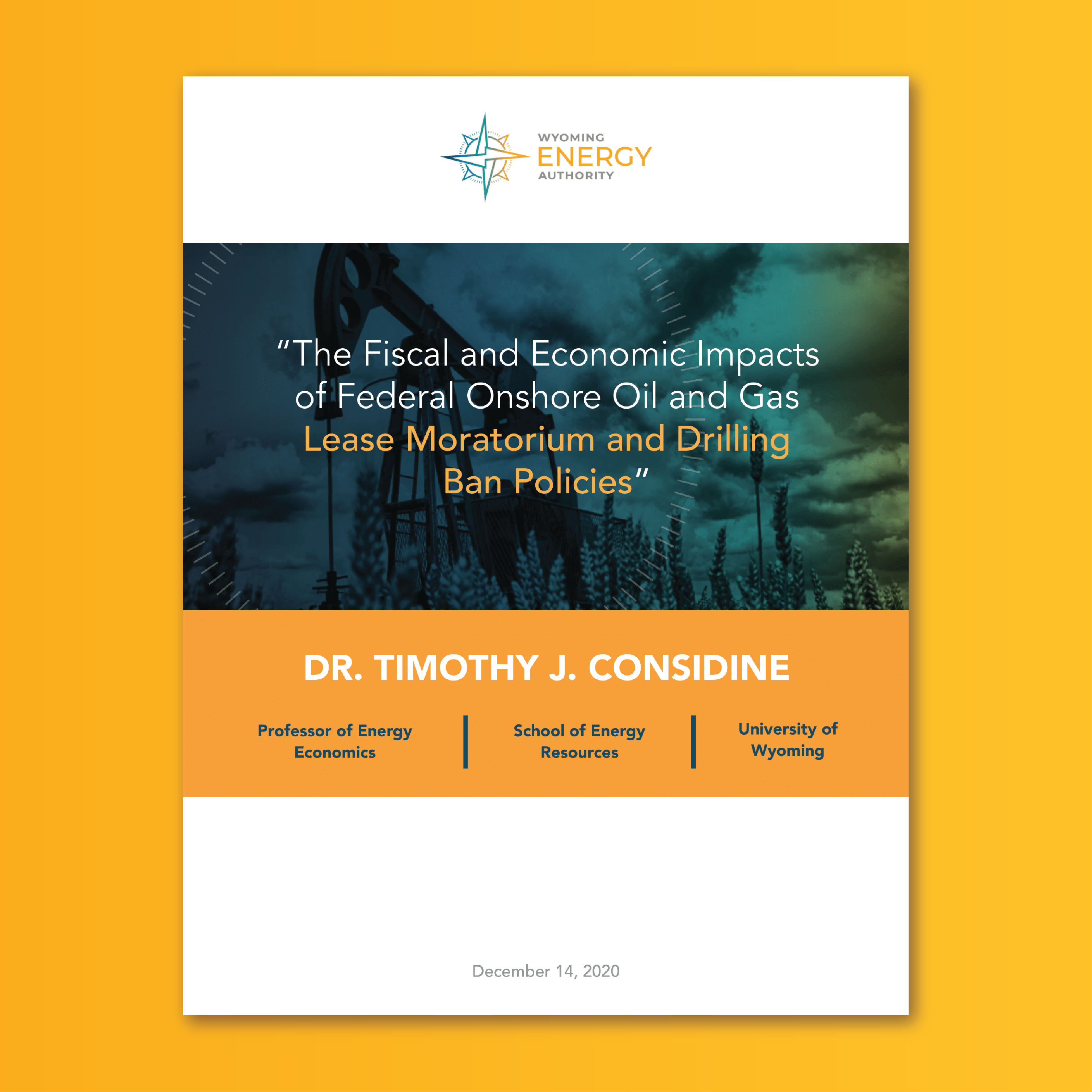 This study estimates the investment and production losses from policies to restrict
oil and gas development on federal lands. The first policy is a moratorium on all
new federal leases. The second involves an outright drilling ban on all onshore federal
lands. The scope of this inquiry includes a study region that includes eight states:
Wyoming, New Mexico, Colorado, Utah, Montana, North Dakota, California, and Alaska.
These lost opportunities are estimated by first projecting how drilling and production
activity is likely to evolve from 2021 through 2040 and then identifying what portion
would be affected by the two policies.
This study estimates the investment and production losses from policies to restrict
oil and gas development on federal lands. The first policy is a moratorium on all
new federal leases. The second involves an outright drilling ban on all onshore federal
lands. The scope of this inquiry includes a study region that includes eight states:
Wyoming, New Mexico, Colorado, Utah, Montana, North Dakota, California, and Alaska.
These lost opportunities are estimated by first projecting how drilling and production
activity is likely to evolve from 2021 through 2040 and then identifying what portion
would be affected by the two policies.
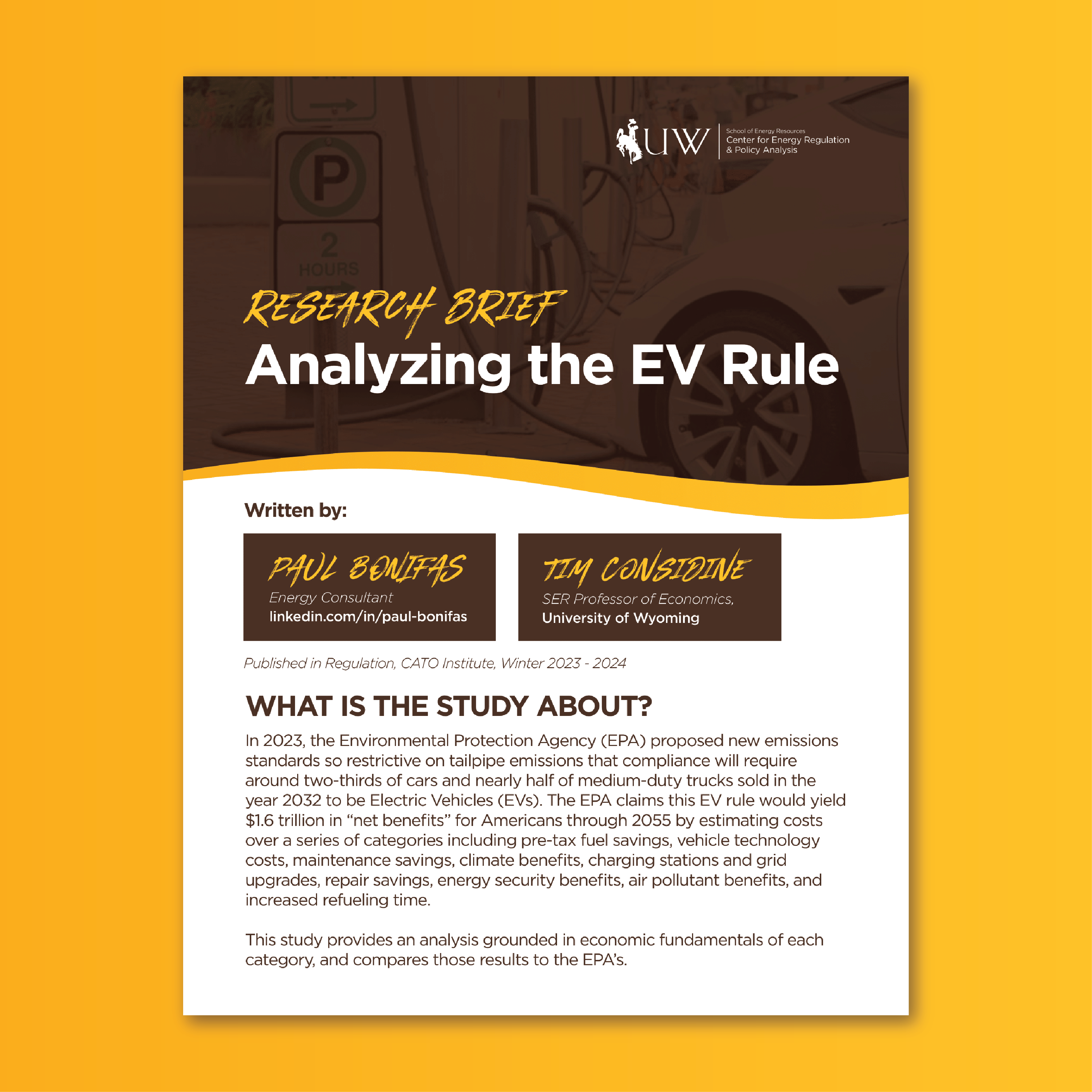 In 2023, the Environmental Protection Agency (EPA) proposed new emissions standards
so restrictive on tailpipe emissions that compliance will require around two-thirds
of cars and nearly half of medium-duty trucks sold in the year 2032 to be Electric
Vehicles (EVs). The EPA claims this EV rule would yield $1.6 trillion in “net benefits”
for Americans through 2055 by estimating costs over a series of categories including
pre-tax fuel savings, vehicle technology costs, maintenance savings, climate benefits,
charging stations and grid upgrades, repair savings, energy security benefits, air
pollutant benefits, and increased refueling time. This study provides an analysis
grounded in economic fundamentals of each category, and compares those results to
the EPA’s, and was published in the Winter 2023-2024 issue of Regulations by the Cato Institute.
In 2023, the Environmental Protection Agency (EPA) proposed new emissions standards
so restrictive on tailpipe emissions that compliance will require around two-thirds
of cars and nearly half of medium-duty trucks sold in the year 2032 to be Electric
Vehicles (EVs). The EPA claims this EV rule would yield $1.6 trillion in “net benefits”
for Americans through 2055 by estimating costs over a series of categories including
pre-tax fuel savings, vehicle technology costs, maintenance savings, climate benefits,
charging stations and grid upgrades, repair savings, energy security benefits, air
pollutant benefits, and increased refueling time. This study provides an analysis
grounded in economic fundamentals of each category, and compares those results to
the EPA’s, and was published in the Winter 2023-2024 issue of Regulations by the Cato Institute.
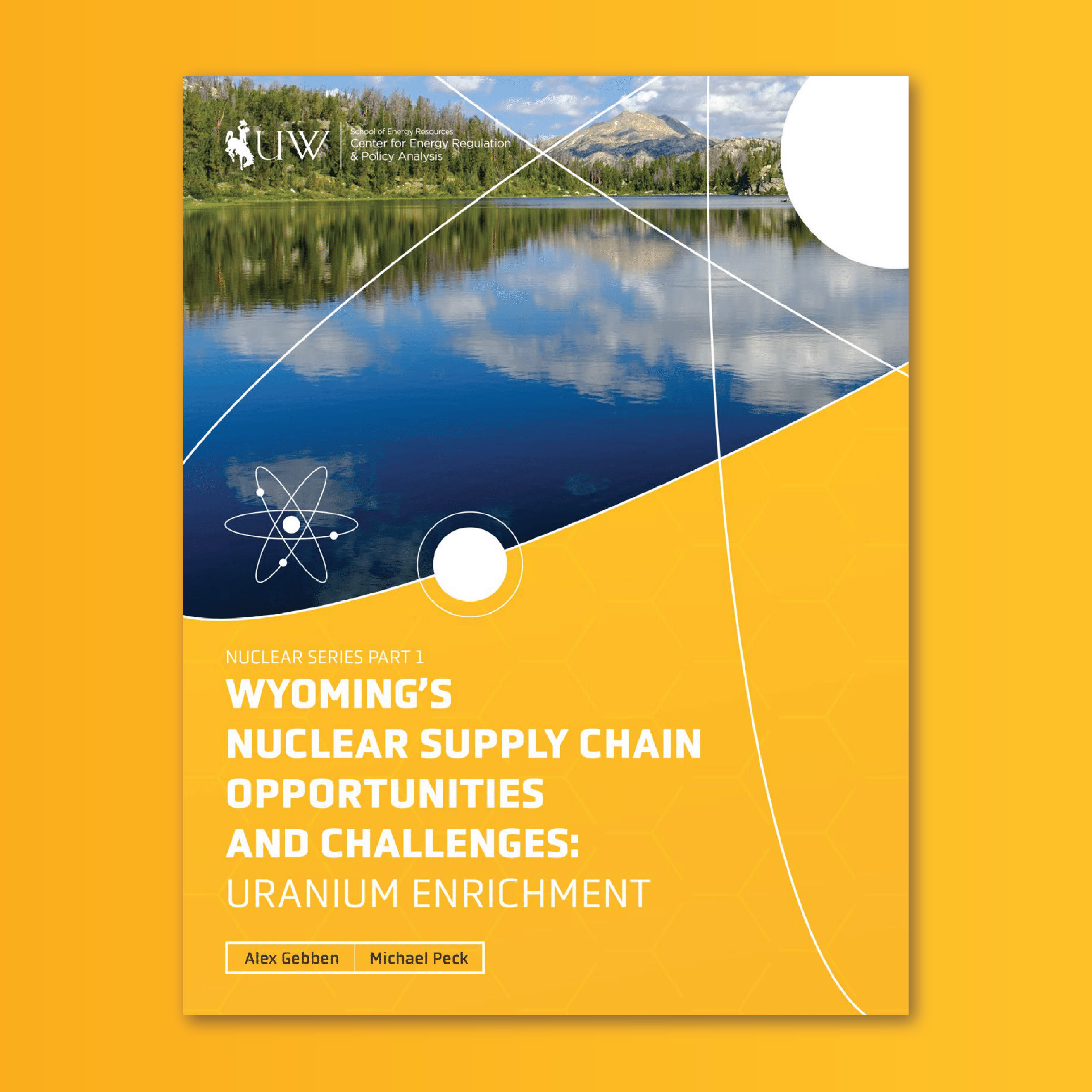 Nuclear Series, Part 1
Nuclear Series, Part 1
Starting at the uranium mine and ending at material storage, the nuclear supply chain encompasses multiple sectors with unique economic challenges and opportunities for the State. This report provides a preliminary analysis of the various economic factors that could stimulate or inhibit potential investments in the Wyoming fuel enrichment sector. This report quantifies the opportunities and the economic outcomes of fostering a uranium enrichment industry in Wyoming. The unique challenges and advantages of attracting the industry to Wyoming are identified. Additionally, economic analyses were performed that estimate potential outcomes of building a uranium enrichment facility.
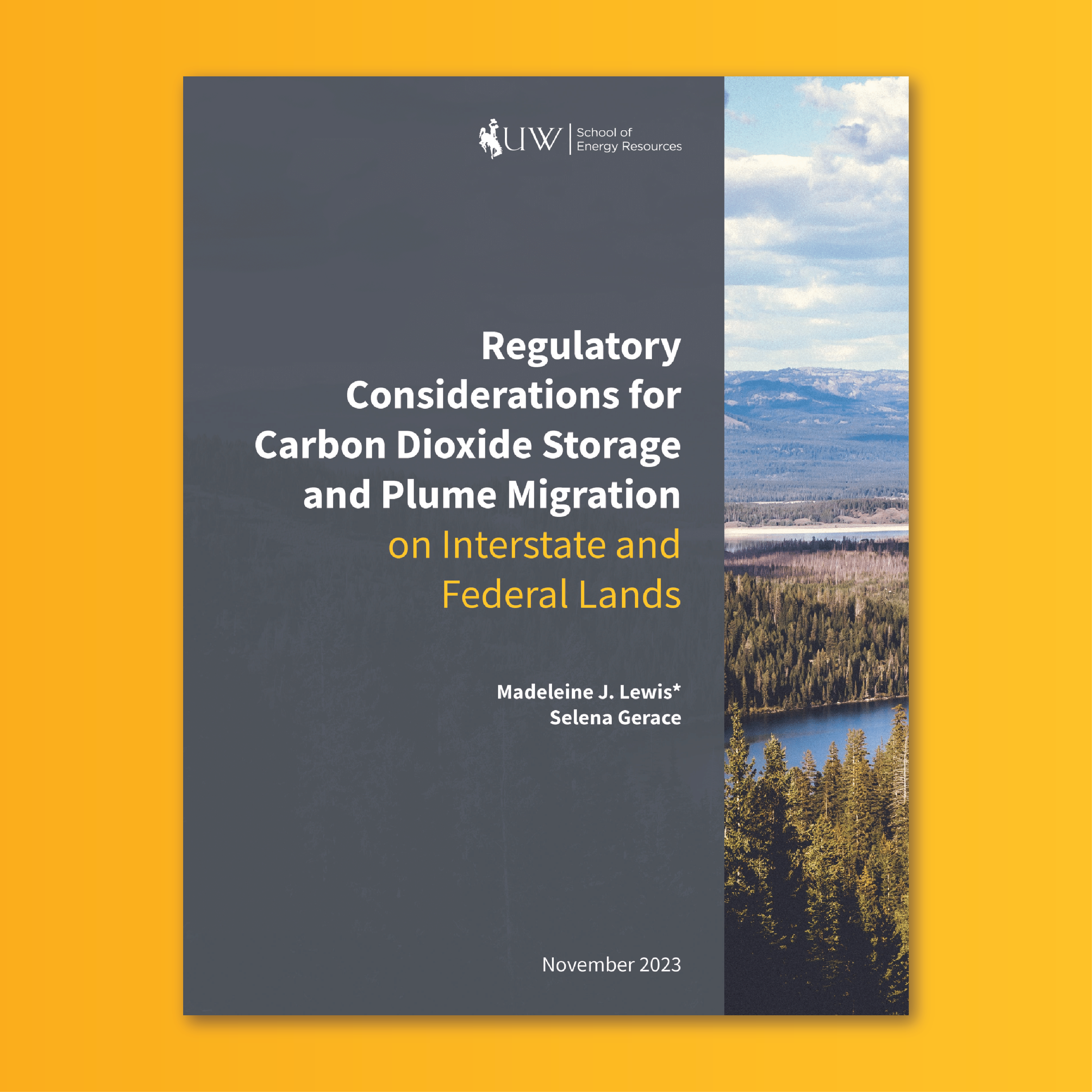 Both the International Energy Agency (IEA) and the Intergovernmental Panel on Climate
Change (IPCC) recognize CCS as an essential climate change mitigation strategy for
meeting global greenhouse gas emission reduction targets.1 Yet, according to the IEA, additional eff orts are still needed to bring CCS to a
broad scale.2 Wyoming, with its extensive deep subsurface saline storage reservoirs and an existing
network of CO2 pipelines, is suited to embrace this opportunity. However, despite
Wyoming’s eff orts to proactively establish a favorable regulatory and statutory framework
for the development of its pore space, the challenge of widespread CCS deployment
is ultimately a regional one, requiring coordination with Wyoming’s neighboring states
and numerous federal land agencies to mobilize the high volume of shared pore space
resources that transcend state boundaries.
Both the International Energy Agency (IEA) and the Intergovernmental Panel on Climate
Change (IPCC) recognize CCS as an essential climate change mitigation strategy for
meeting global greenhouse gas emission reduction targets.1 Yet, according to the IEA, additional eff orts are still needed to bring CCS to a
broad scale.2 Wyoming, with its extensive deep subsurface saline storage reservoirs and an existing
network of CO2 pipelines, is suited to embrace this opportunity. However, despite
Wyoming’s eff orts to proactively establish a favorable regulatory and statutory framework
for the development of its pore space, the challenge of widespread CCS deployment
is ultimately a regional one, requiring coordination with Wyoming’s neighboring states
and numerous federal land agencies to mobilize the high volume of shared pore space
resources that transcend state boundaries.
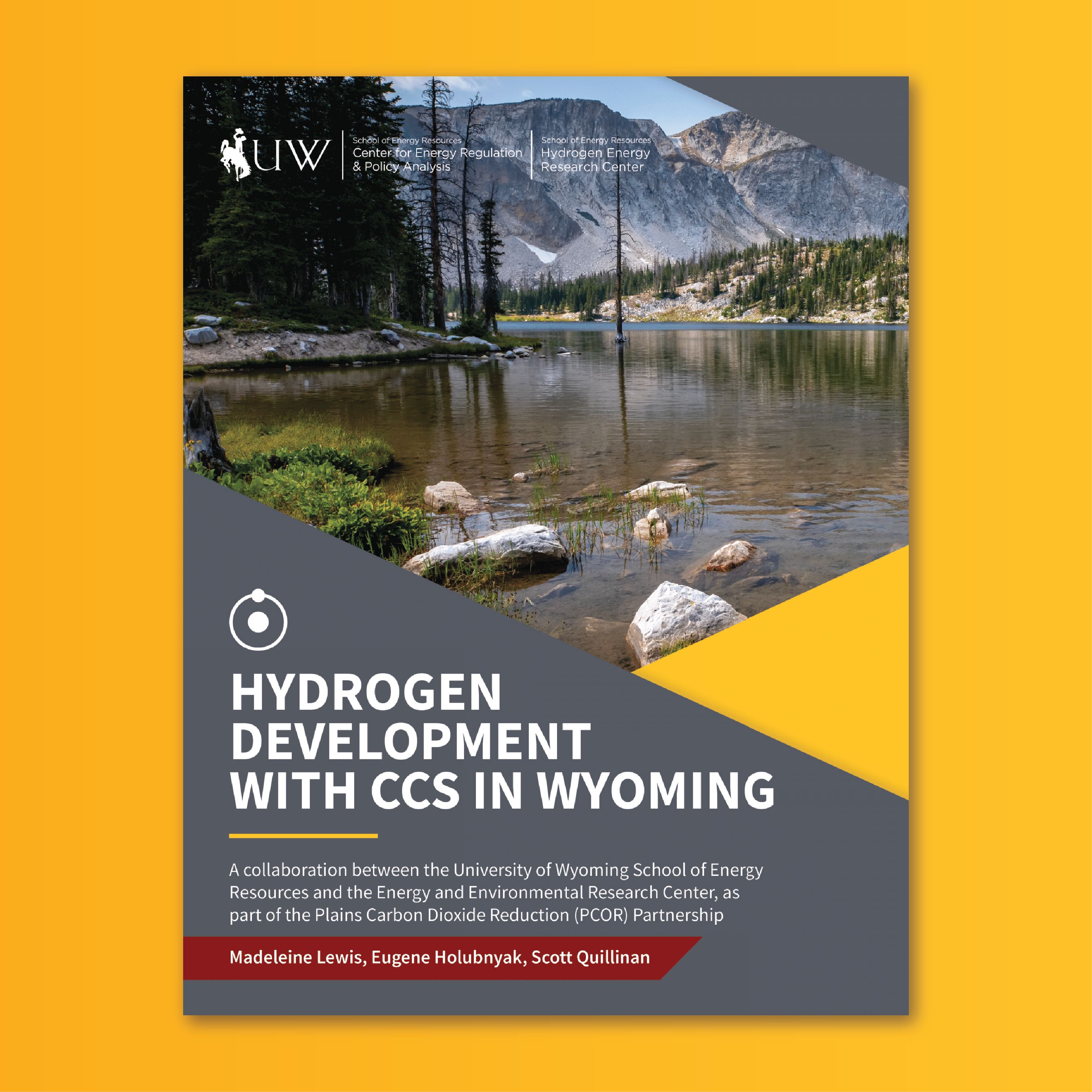 This paper begins in Part I by providing an overview of existing and developing applications
for hydrogen in a net-zero economy, a description of existing hydrogen production
methods (aka the “Hydrogen Rainbow”), and the increasing demands and incentives for
clean hydrogen deployment. Specifically, the paper analyzes funding provisions in
the IIJA and IRA that aim to accelerate development of the clean hydrogen industry.
In Part II, the paper turns to an analysis of the geographic, economic, legal, and
regulatory features that render Wyoming a particularly well-suited location for a
blue hydrogen economy. As discussed in Part III, numerous projects to advance blue
hydrogen development are already underway in Wyoming, including, but not limited to,
Tallgrass MLP’s Blue Bison Project located near Douglas and Williams’ Southwest Wyoming
Hydrogen Hub located near Opal and Wamsutter. These projects intend to capitalize
on synergies between Wyoming’s natural gas supply and associated infrastructure and
the state’s potential for widespread CCS deployment. Part IV concludes with a brief
summary of policy opportunities for the State of Wyoming to fulfill its potential
as a global “hydrogen headwaters” through blue hydrogen deployment.
This paper begins in Part I by providing an overview of existing and developing applications
for hydrogen in a net-zero economy, a description of existing hydrogen production
methods (aka the “Hydrogen Rainbow”), and the increasing demands and incentives for
clean hydrogen deployment. Specifically, the paper analyzes funding provisions in
the IIJA and IRA that aim to accelerate development of the clean hydrogen industry.
In Part II, the paper turns to an analysis of the geographic, economic, legal, and
regulatory features that render Wyoming a particularly well-suited location for a
blue hydrogen economy. As discussed in Part III, numerous projects to advance blue
hydrogen development are already underway in Wyoming, including, but not limited to,
Tallgrass MLP’s Blue Bison Project located near Douglas and Williams’ Southwest Wyoming
Hydrogen Hub located near Opal and Wamsutter. These projects intend to capitalize
on synergies between Wyoming’s natural gas supply and associated infrastructure and
the state’s potential for widespread CCS deployment. Part IV concludes with a brief
summary of policy opportunities for the State of Wyoming to fulfill its potential
as a global “hydrogen headwaters” through blue hydrogen deployment.
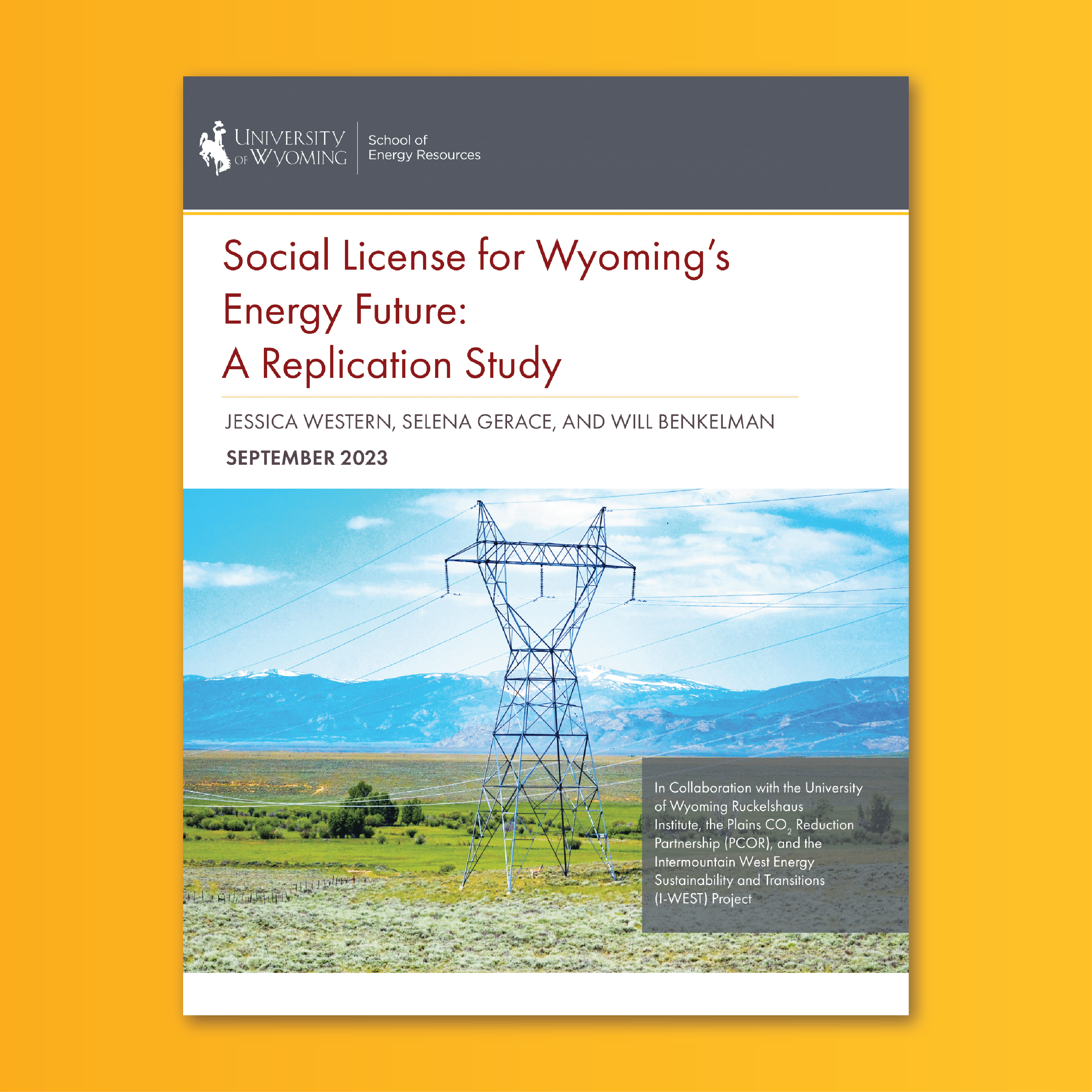 This study explores the perspectives, values, needs, and concerns of Wyoming residents
in relation to energy in Wyoming. It is a replication of a 2020 study published as
“Social License for Wyoming’s Energy Future: What Do Residents Want?”. Both studies were motivated by a desire to understand what Wyoming residents want
in relation to energy and why. This replication provides an update and comparison
to the 2020 study and allows us to track how Wyoming residents’ perspectives about
energy have evolved over time.
This study explores the perspectives, values, needs, and concerns of Wyoming residents
in relation to energy in Wyoming. It is a replication of a 2020 study published as
“Social License for Wyoming’s Energy Future: What Do Residents Want?”. Both studies were motivated by a desire to understand what Wyoming residents want
in relation to energy and why. This replication provides an update and comparison
to the 2020 study and allows us to track how Wyoming residents’ perspectives about
energy have evolved over time.
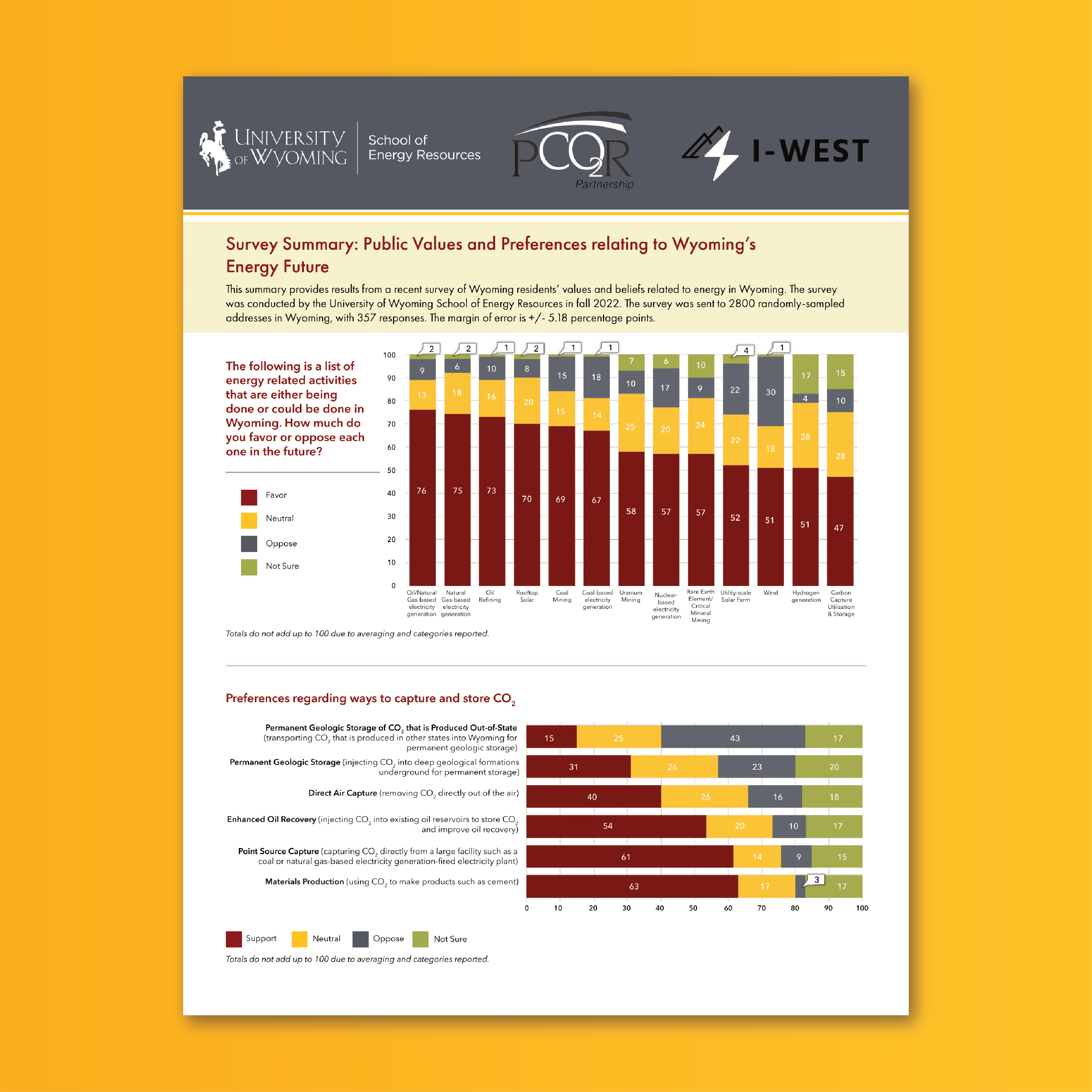 An updated survey from the University of Wyoming’s School of Energy Resources (SER)
explores Wyoming residents’ perspectives of energy development, including “social
license” — the level in which Cowboy State residents support or oppose different forms
and amounts of energy development. The survey covers energy development topics, including legacy fossil fuel industries;
utility-scale renewable projects; hydrogen generation; carbon capture, utilization
and storage (CCUS); and novel industries in Wyoming, such as rare earth element and
critical mineral mining.
An updated survey from the University of Wyoming’s School of Energy Resources (SER)
explores Wyoming residents’ perspectives of energy development, including “social
license” — the level in which Cowboy State residents support or oppose different forms
and amounts of energy development. The survey covers energy development topics, including legacy fossil fuel industries;
utility-scale renewable projects; hydrogen generation; carbon capture, utilization
and storage (CCUS); and novel industries in Wyoming, such as rare earth element and
critical mineral mining.
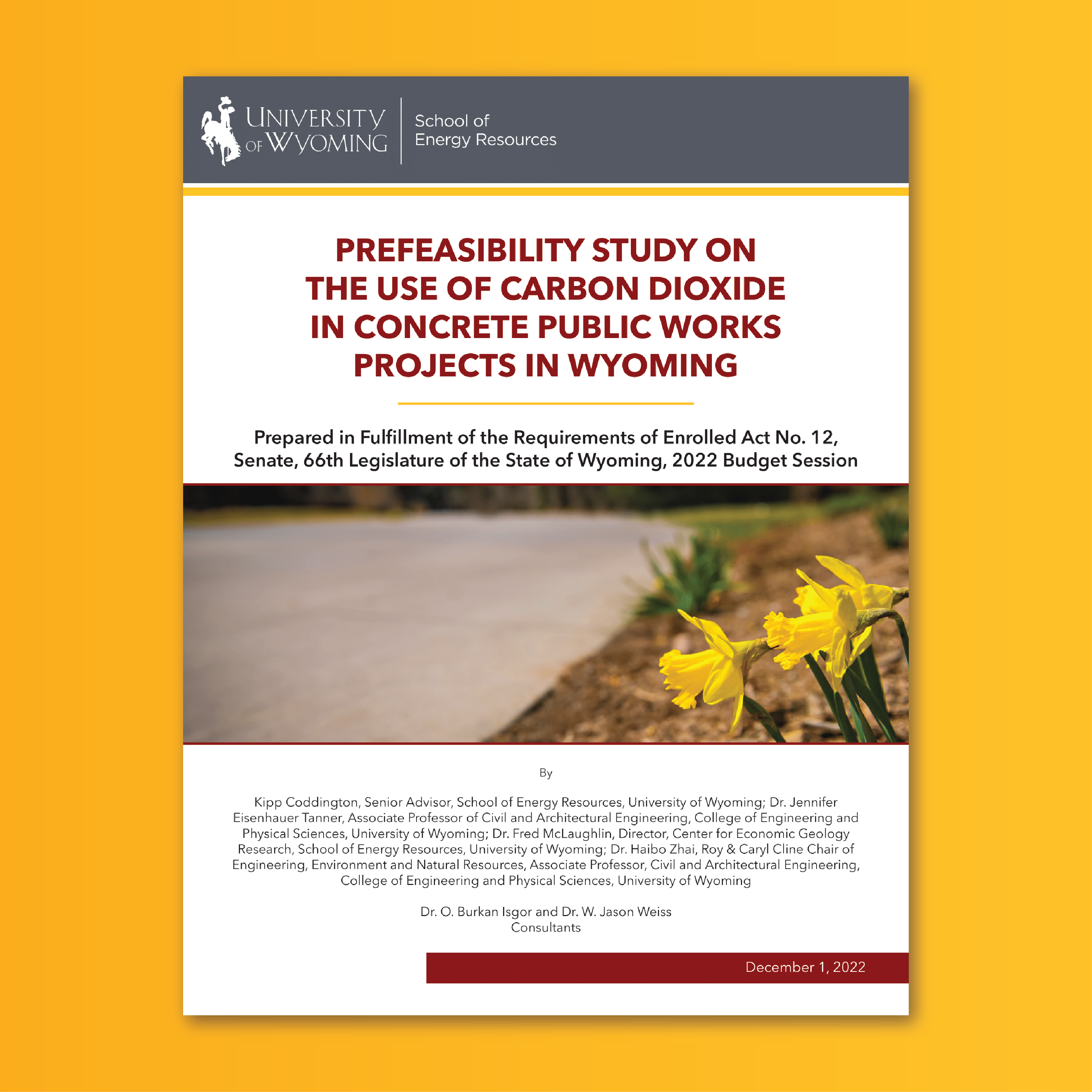 This prefeasibility study examines the potential use of carbon dioxide (CO2) in concrete for public works projects in Wyoming, focusing on coal-fired electric
generating units (EGU) as the CO2 source(s). The use of CO2 in concrete is technically and commercially complicated. Historically, CO2 is not a constituent additive to concrete, and as such, there are limited options
for requiring its direct incorporation. The cement/concrete industry in Wyoming is
relatively small in comparison to the quantity of CO2 produced in the state, and public works projects are a fraction of the industry’s
size. Thus, the volume of CO2 that could be used directly in concrete is relatively small (a conservative estimate
is 0.15 million metric tons per year) compared to that produced by coal-fired EGUs
in Wyoming (approximately 36 million metric tons per year). A large portion of this
study assumes that CO2 from one or more coal-fired EGUs in the state is available to be utilized commercially.
At the time this study was written, no coal-EGU was commercially equipped with such
a technology in Wyoming, but work in this field continues to advance in the state.
This prefeasibility study examines the potential use of carbon dioxide (CO2) in concrete for public works projects in Wyoming, focusing on coal-fired electric
generating units (EGU) as the CO2 source(s). The use of CO2 in concrete is technically and commercially complicated. Historically, CO2 is not a constituent additive to concrete, and as such, there are limited options
for requiring its direct incorporation. The cement/concrete industry in Wyoming is
relatively small in comparison to the quantity of CO2 produced in the state, and public works projects are a fraction of the industry’s
size. Thus, the volume of CO2 that could be used directly in concrete is relatively small (a conservative estimate
is 0.15 million metric tons per year) compared to that produced by coal-fired EGUs
in Wyoming (approximately 36 million metric tons per year). A large portion of this
study assumes that CO2 from one or more coal-fired EGUs in the state is available to be utilized commercially.
At the time this study was written, no coal-EGU was commercially equipped with such
a technology in Wyoming, but work in this field continues to advance in the state.
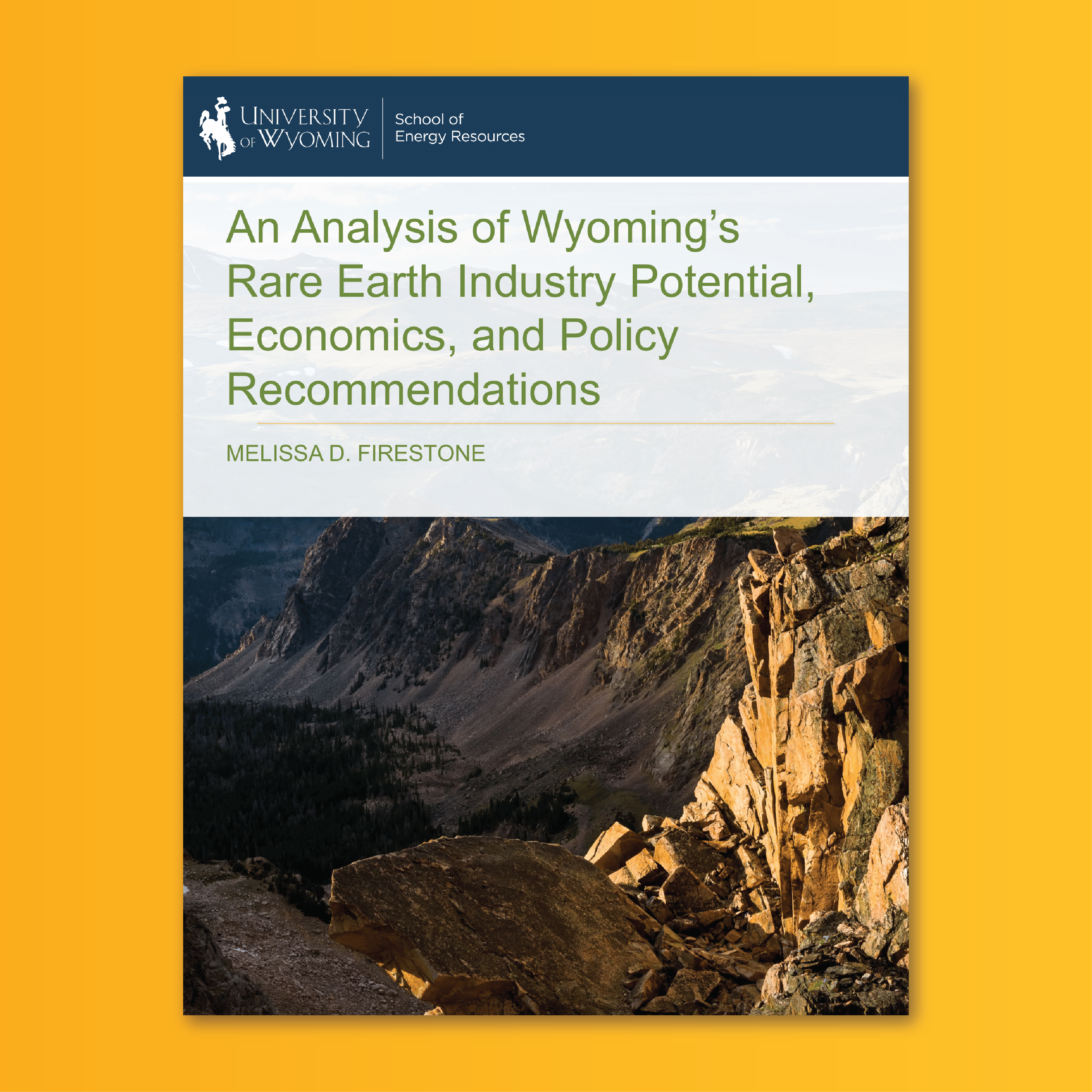 Rare earth elements (REE) have increasingly become a topic of discussion among US
policy makers and in the media due to their importance and increasing application
in electronic manufactured products. China’s near monopoly over the global REE value
chain and US’ reliance upon it for both finished goods containing REE and for REE
used in US based industry is being recognized as a national security concern resulting
in government funding being allocated towards US based REE supply chain projects.
Rare earth elements (REE) have increasingly become a topic of discussion among US
policy makers and in the media due to their importance and increasing application
in electronic manufactured products. China’s near monopoly over the global REE value
chain and US’ reliance upon it for both finished goods containing REE and for REE
used in US based industry is being recognized as a national security concern resulting
in government funding being allocated towards US based REE supply chain projects.
In addition to addressing possibilities related to the proven Bear Lodge Deposit located in Crook County and owned by Rare Element Resources, Ltd., this paper also explores the economics of extracting REE and CM from other potential conventional deposits, as well as unconventional sources such as coal and coal byproducts, phosporia formations, and uranium roll-fronts.
 This study was conducted at the behest of the Department of Energy (DOE), to explore
the needs among Wyoming’s residents to transition to a net zero carbon energy economy.
The information the DOE specifically asked for was 1) stakeholder expectations on
overall carbon-neutrality goals within Wyoming; 2) stakeholder needs related to transitioning
to carbon-neutrality within Wyoming; 3) stakeholder concerns related to transitioning
to carbon-neutrality within Wyoming; 4) stakeholder expectations related to transitioning
to carbon-neutrality within Wyoming; 5) which technologies/opportunities stakeholders
feel will be more effective in meeting carbon-neutrality within Wyoming.
This study was conducted at the behest of the Department of Energy (DOE), to explore
the needs among Wyoming’s residents to transition to a net zero carbon energy economy.
The information the DOE specifically asked for was 1) stakeholder expectations on
overall carbon-neutrality goals within Wyoming; 2) stakeholder needs related to transitioning
to carbon-neutrality within Wyoming; 3) stakeholder concerns related to transitioning
to carbon-neutrality within Wyoming; 4) stakeholder expectations related to transitioning
to carbon-neutrality within Wyoming; 5) which technologies/opportunities stakeholders
feel will be more effective in meeting carbon-neutrality within Wyoming.
 This paper is the first in a two-part series focusing on the rare earth element (REE)
industry (when referred to in the papers, the term “REE” represents the plural or
the singular, as implied by sentence context). Due to the unique characteristics of
REE and complexities that characterize the REE market, this paper aims to provide
a base understanding of REE, the REE production and extraction process, and an overview
of the global REE market. Given that the US imports all the REE it consumes from foreign
countries, government interest in locally sourced REE has grown. This paper provides
a summary of US government interest, policies, and funding being directed to the study
and development of a REE supply chain in the US.
This paper is the first in a two-part series focusing on the rare earth element (REE)
industry (when referred to in the papers, the term “REE” represents the plural or
the singular, as implied by sentence context). Due to the unique characteristics of
REE and complexities that characterize the REE market, this paper aims to provide
a base understanding of REE, the REE production and extraction process, and an overview
of the global REE market. Given that the US imports all the REE it consumes from foreign
countries, government interest in locally sourced REE has grown. This paper provides
a summary of US government interest, policies, and funding being directed to the study
and development of a REE supply chain in the US.
 This report summarizes results from a two-phase study by the University of Wyoming's
School of Energy Resources and Ruckelshaus Institute that explores Wyoming residents'
values, beliefs, and perceptions regarding the future of Wyoming's energy economy.
The purpose of the study was to examine Wyoming citizens' acceptance and approval
of different energy future scenarios to provide a better understanding of what Wyoming
residents envision for the future of the state's energy economy.
This report summarizes results from a two-phase study by the University of Wyoming's
School of Energy Resources and Ruckelshaus Institute that explores Wyoming residents'
values, beliefs, and perceptions regarding the future of Wyoming's energy economy.
The purpose of the study was to examine Wyoming citizens' acceptance and approval
of different energy future scenarios to provide a better understanding of what Wyoming
residents envision for the future of the state's energy economy.
 This article examines the challenges of implementing a one-size-fits-all framework
of environmental justice. Particularly for rural energy states like Wyoming, that
innately rely on energy for tax revenue and jobs, how do stakeholders in priority
energy communities make an environmental justice in favor of their communities hosting
a large-scale industrial project?
This article examines the challenges of implementing a one-size-fits-all framework
of environmental justice. Particularly for rural energy states like Wyoming, that
innately rely on energy for tax revenue and jobs, how do stakeholders in priority
energy communities make an environmental justice in favor of their communities hosting
a large-scale industrial project?
The overview assists energy communities with identifying the disconnect between current screening tools and will help to better inform conversations with federal entities seeking to enforce environmental justice requirements, so a clear and equitable framework can be established for all communities involved with past and future large-scale energy development projects.

